
Garmin has a long history of developing sometimes niche products, often at double-take prices. This is one of those products. I’ll save you a bunch of reading and tell you straight-up at the beginning of this review, that while I wouldn’t be a purchaser of this product (because I wear a watch – or two – while sleeping already), the hardware engineering of it is astoundingly good. In fact, it’s far better than Garmin’s marketing efforts and computer imagery would lead you to believe initially.
The Garmin Index Sleep Monitor is conceptually a simple product: It negates the need to wear a watch to get sleep data – things like sleep time, breathing disturbances, blood oxygen levels, and more. While it’s primarily designed for existing Garmin watch customers, you don’t need a Garmin watch at all to use it. It can be used without any other Garmin device. But, if you have a capable watch, then it backfills all of the data you need for more advanced metrics, like Training Readiness, Body Battery, and more.
More notably, though, while this aptly-named sleep product is designed only for capturing sleep data, it can very likely be seen as a trial run platform for a more 24×7 product, akin to a Whoop or similar band. For now though, this is all about sleep.
With that, let’s dive into it.
What It Does:
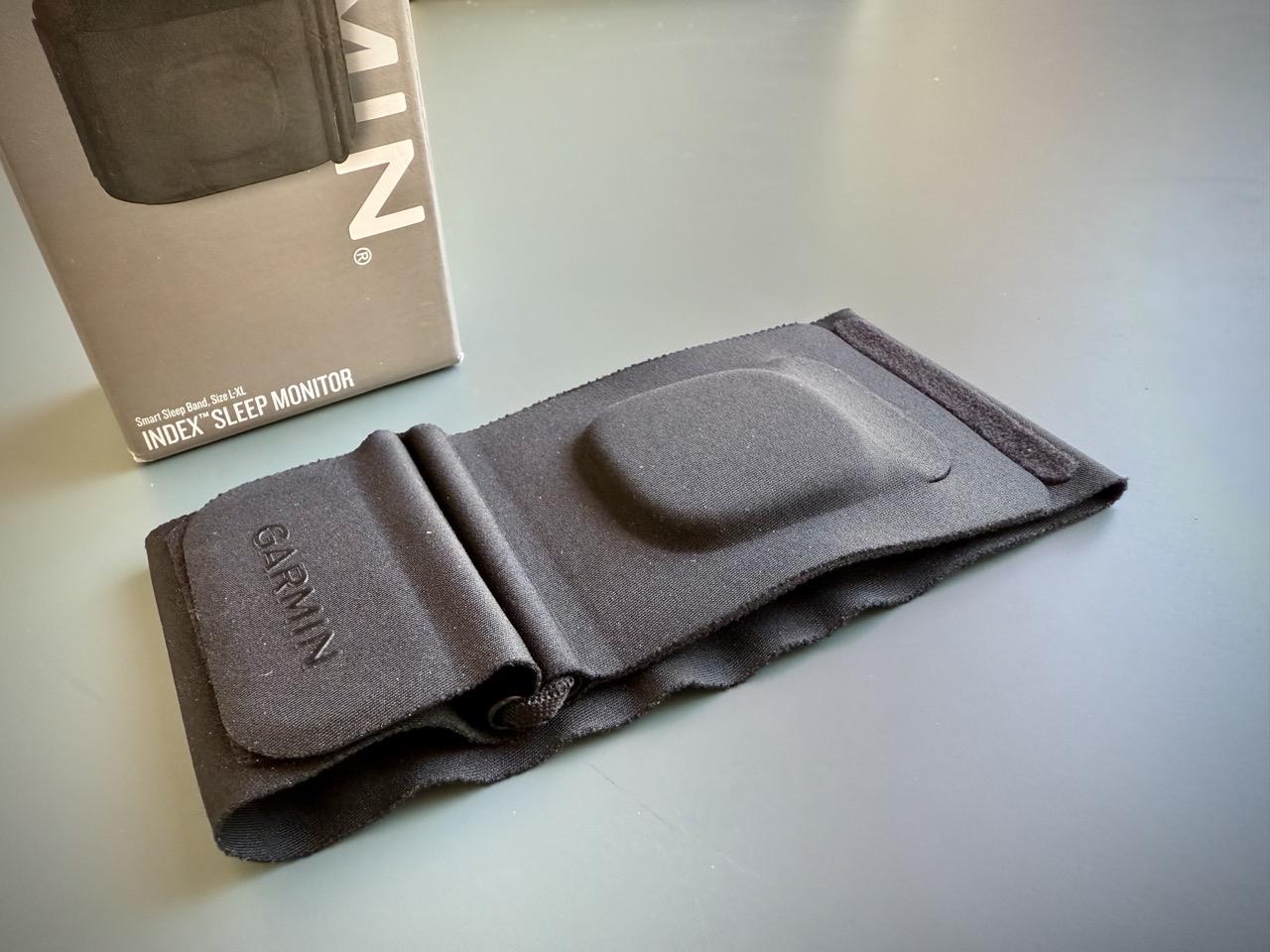
The Index Sleep monitor is simply designed to record all of your sleep metrics, and then backfill that data to your Garmin account when you wake up. The target purchaser here is squarely existing Garmin customers who own a watch, but don’t like wearing a watch to bed. This ‘fixes’ the problem where no sleep data impacts many of the Garmin metrics, especially training metrics.
Without knowing how much you sleep each night, Garmin’s devices can’t figure out how your training recovery is going, how ready you are to train, whether or not you might be getting sick, or how you might be recovering from jet lag. All things that require continuous vitals monitoring.
Whether or not you agree with this product (or its price), it’s factually true that if you don’t have complete data, you can’t give complete recommendations. Just as it’s true if you didn’t have any sports tech and were simply old-school style with a coach. If you omitted that you hadn’t slept more than a few hours last night before doing a hard workout (that you failed), then that coach couldn’t give you accurate or useful advice on how to recover (or, how to best plan for the next workout).
In any event, the Garmin Index Sleep Monitor contributes the following sleep metrics to your Garmin account:
– Sleep times (fall asleep/wake-up)
– Blood oxygen (SpO2) levels (aka PulseOx in Garmin lingo)
– Heart Rate Variability data
– Skin Temperature
– Body Battery levels
– Sleep Phase/Stage levels (Deep, REM, Light, Awake)
– Sleep Score
– Breathing Disturbances (Garmin’s non-medically certified version of sleep apnea monitoring)
– Heart Rate (during sleep)
In turn, it updates the following metrics with that data:
– Training Readiness score (which includes sleep history)
– Training Status (which requires HRV)
– Recovery time
– HRV Status (the scoring levels based on the underlying HRV data)
– All sleep-specific metrics
– Sleep Coach recommendations
– Women’s ovulation cycle prediction features
– Morning Report
– Daily Suggested Workouts
If you’re a Garmin watch user, and you don’t wear the watch during the night, you’ll notice many metrics don’t show up (or populate fully) that next morning. This aims to resolve that.
Finally, from a hardware and pricing standpoint, the unit is $169USD, and comes in two sizes, either S-M or L-XL band sizes (you can buy the other band size if you want). The extra bands/straps are $49USD/39EUR, in the event a few years down the road you need to replace them.
The battery is specified to last 7 nights according to Garmin, more on that in a moment.
With that, let’s get into it.
In the Box:
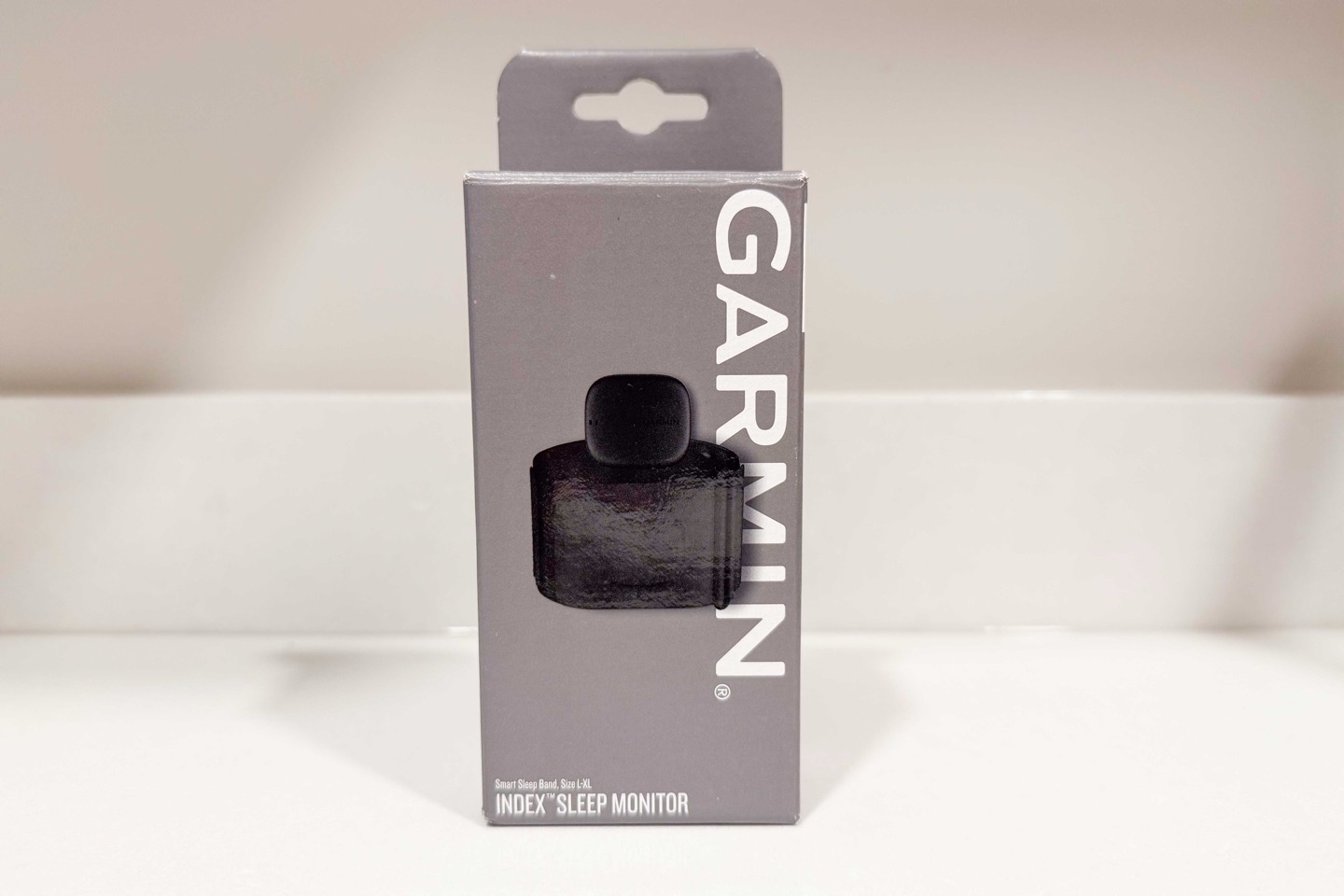
The Garmin Index Sleep monitor comes with three parts, albeit one of them is already combined into the strap for you. Inside, you’ll see the band (fabric thing), a standard Garmin charging cable, and then inside the band, there’s the pod.
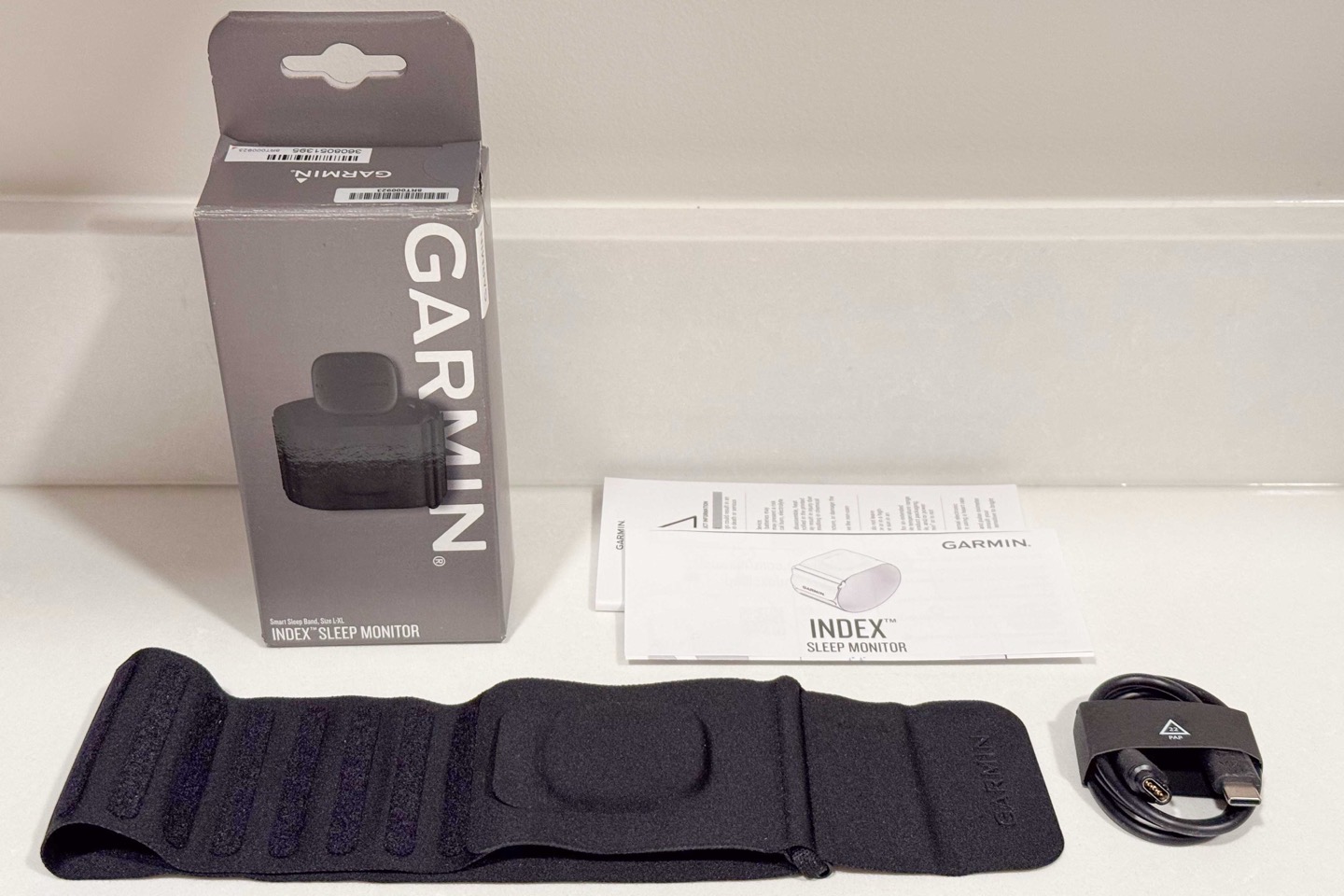
The strap comes in two different sizes: S-M, and L-XL. In my case, I had both straps, as you can buy the other strap as an accessory. Ultimately, I decided that the S-M size fit best on my arms and went with that one. I could have made the L-XL one work, but I ended up with a fair bit of extra length flopping around.
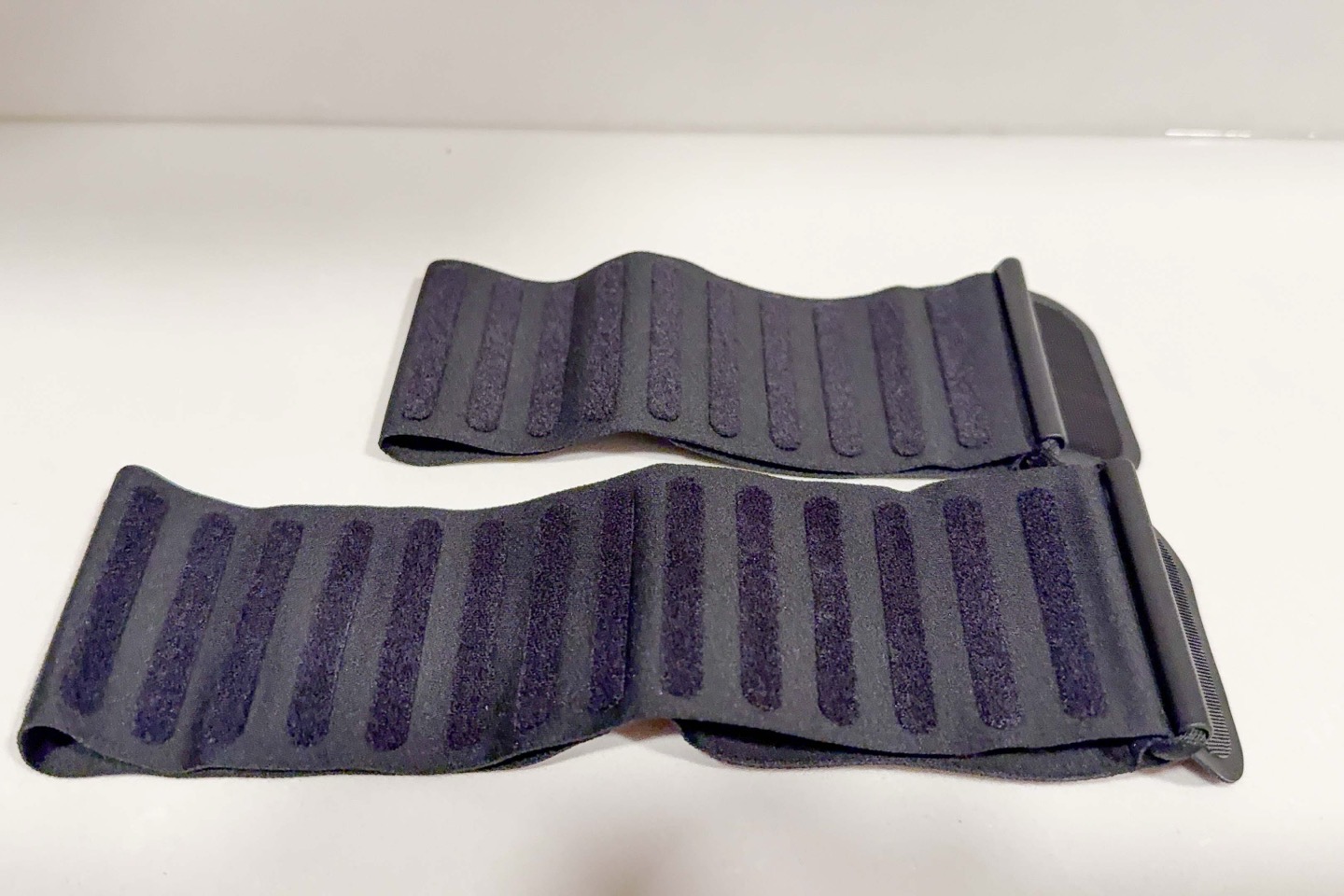
For size comparison, here it is next to a Whoop 5.0 device (the MG is the same size):
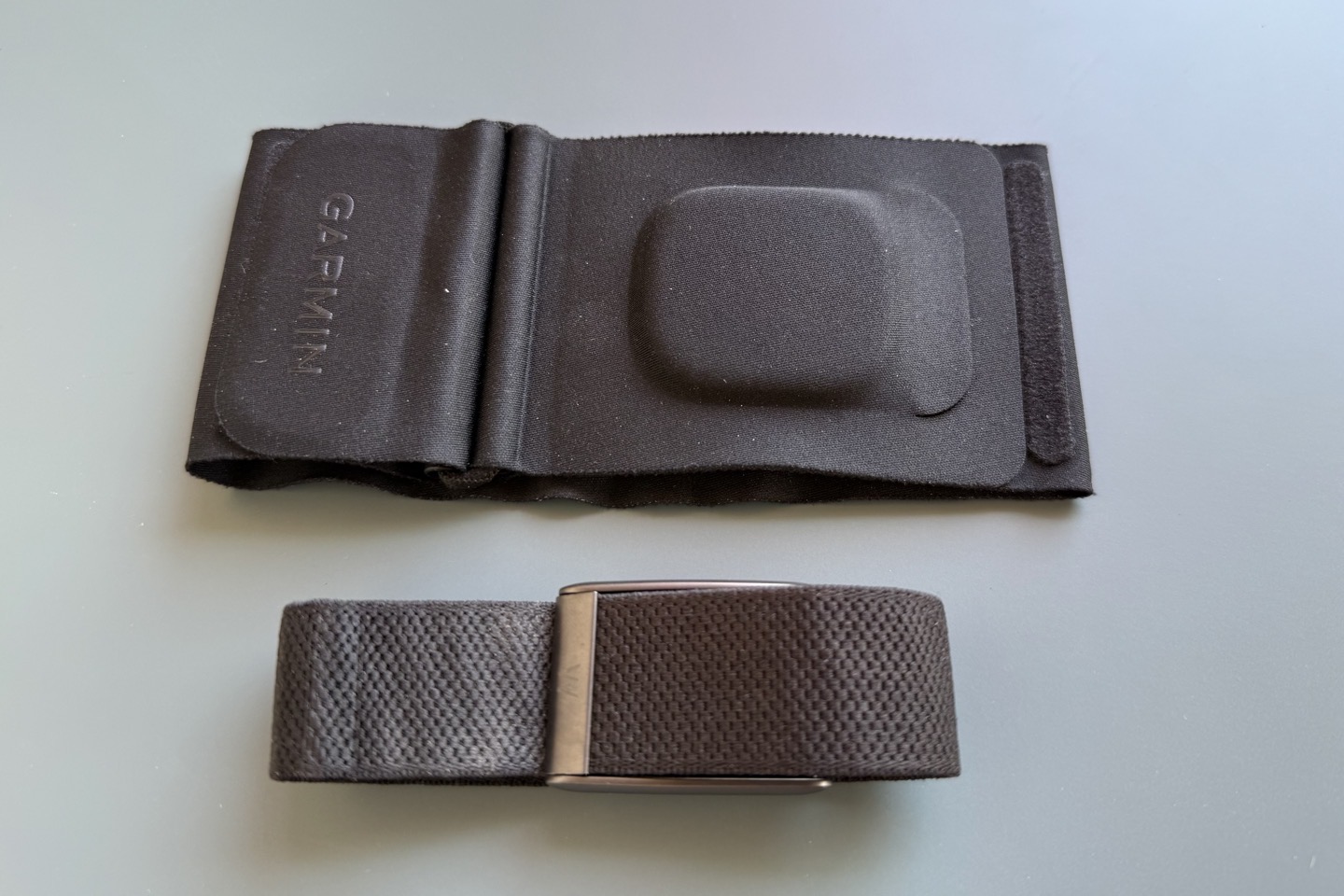
Just for context on the weight that we’re talking about here, let’s compare side-by-side with the Whoop 5.0 band (the MG band is identical in weight, fwiw):
AmazFit Hyrox band: 21g
Garmin Index Sleep band (S-M): 31g
Whoop 5.0/MG on regular wrist band: 29g
Whoop 5.0/MG on bicep band: 31g
As you can see, it’s crazy lightweight, and in range of others in this realm.
Daily Usage:
First up, it’s worthwhile noting that the pod is removable, so you can swap bands as well as wash the band in the laundry machine. More importantly, though, the pod stays very nicely inside the band; there’s no chance of it accidentally falling out or such.

Next, there’s the band. At first glance (looking at Garmin marketing/promotion materials), you’d see the rather wide size (compared to something like a Whoop bicep band), and wonder: WTF is it so big for?!?
But what you quickly realize the instant you pick it up is just how insanely thin and lightweight it is. And more specifically, as someone who has worn a Whoop bicep band for roughly 5 years now (every single night), the difference is astonishing. By being rather wide (and super lightweight), it distributes that ‘snugness’ over a much wider area, as a result, you simply don’t realize it’s there. In fact, that’s actually a slight concern of Garmin’s, in that people might just leave in the morning with it still on their arm. In doing so, you’d burn a lot more battery (obviously). Additionally, removal of the band is a key signal to the band to initiate an immediate sync to the app.
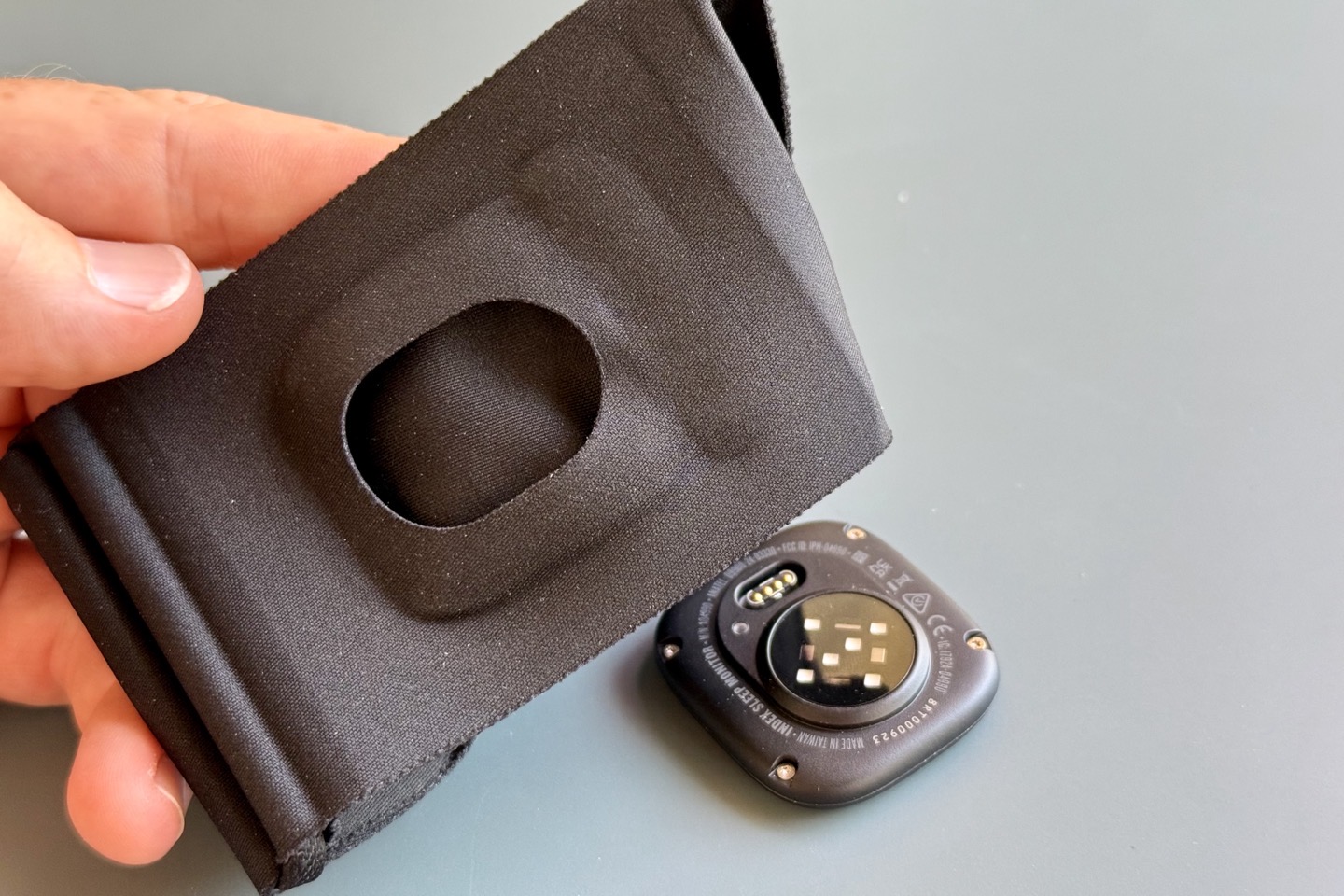
As for the material, as noted, it’s incredibly lightweight and soft to the touch. Being a non-fashion-forward dude, I’m not up to date on the specifics of various clothing textiles. Specifically, the differences between silk and things that popular culture has deemed silky. However, as one who has done the laundry around our household occasionally, I noted that it basically felt like women’s underwear (my wife would probably argue I should do the laundry more often, then again, she probably would prefer I didn’t).
In any case, given Garmin’s press materials at the time didn’t actually specify what the material was, I enquired to Garmin about the exact material composition (including my comparison to women’s underwear). A few minutes later, I received clarification of the materials, for which I will include the exact quote here:
“70% Nylon, 30% Spandex, 0% women’s underwear”
See, who says Garmin execs don’t have a sense of humor?
But fear not, unnamed exec, my wife actually agrees. Without telling her about this exchange, I handed her the band and asked her what it felt like. Her response: Women’s underwear. See, we all agree! Oh, and she thought it felt pretty comfortable, too.
In any event, to adjust the sizing, you have this little tube thingy that you can use. Again, it’s astonishing how lightweight it is, you just never feel it (despite looking like something you’d very much feel).
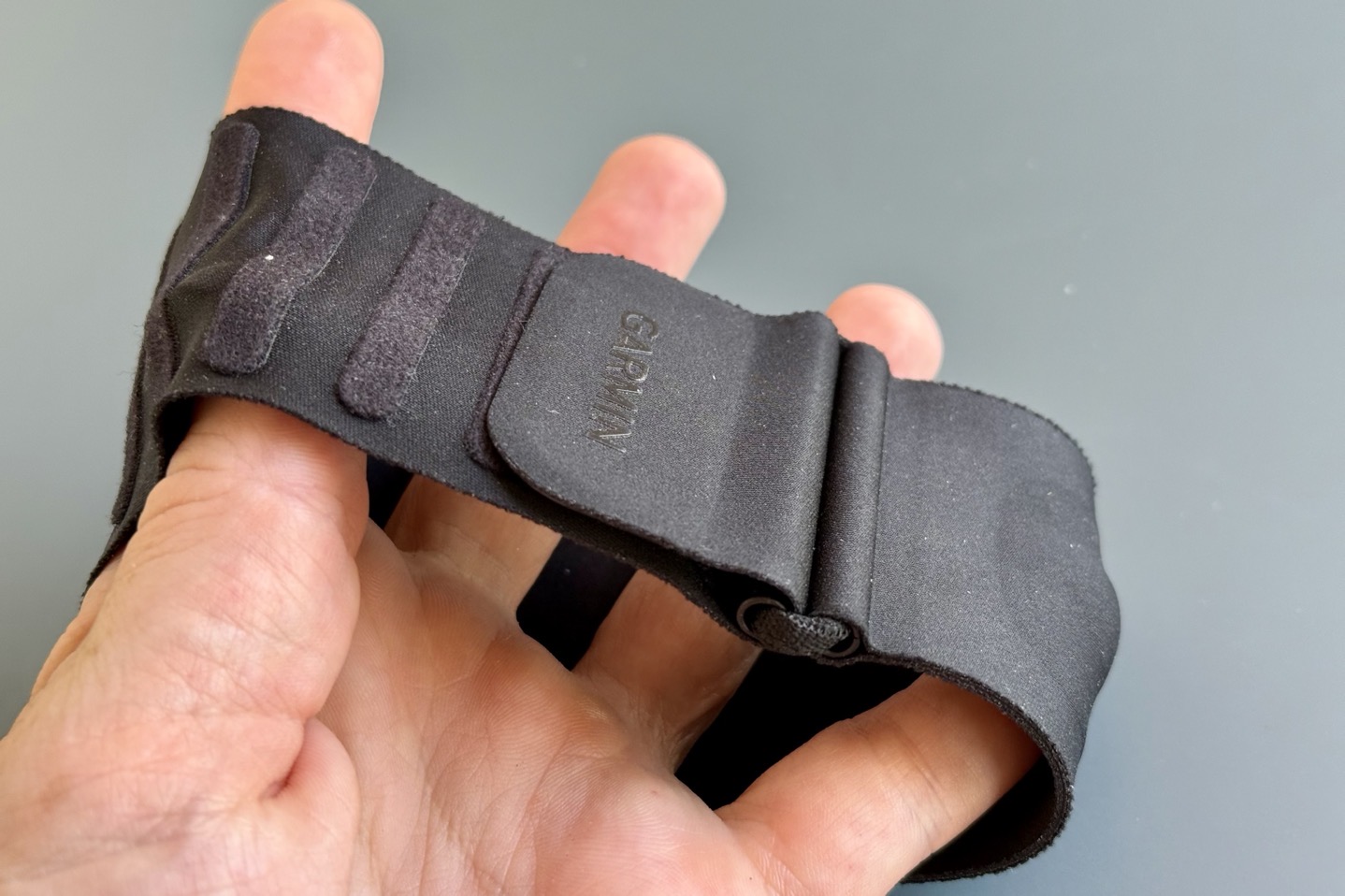
You can adjust the positioning of it to wherever it feels best for you. Garmin roughly recommends having the sensor facing outwards, but that’s purely for comfort reasons. Ultimately, you do you.
At this point, you’re ready to sleep. However, you can set an alarm if you want to. This can be either a specific-time static alarm, or a smart alarm. In either case, you can create custom schedules for them too:
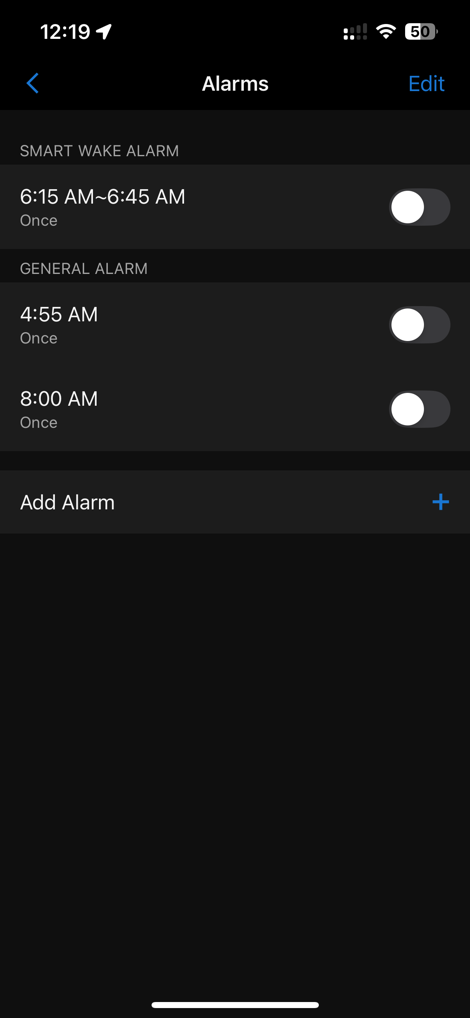


For smart alarms, they’ll work as they did on the Vivoactive 6 when it was released, which is that you’re effectively setting the “must wake-up by” time (e.g. 6:45AM), and then it’ll potentially wake you up anytime in the preceding 30 minutes (e.g. between 6:15AM and 6:45AM), depending on the most ideal sleep cycle. By picking the right sleep cycle to wake you up in, it’ll theoretically reduce your grogginess level.
Additionally, there are a few other settings and such you can poke at here in the Garmin Connect app, but by and large, it’s pretty minimal:
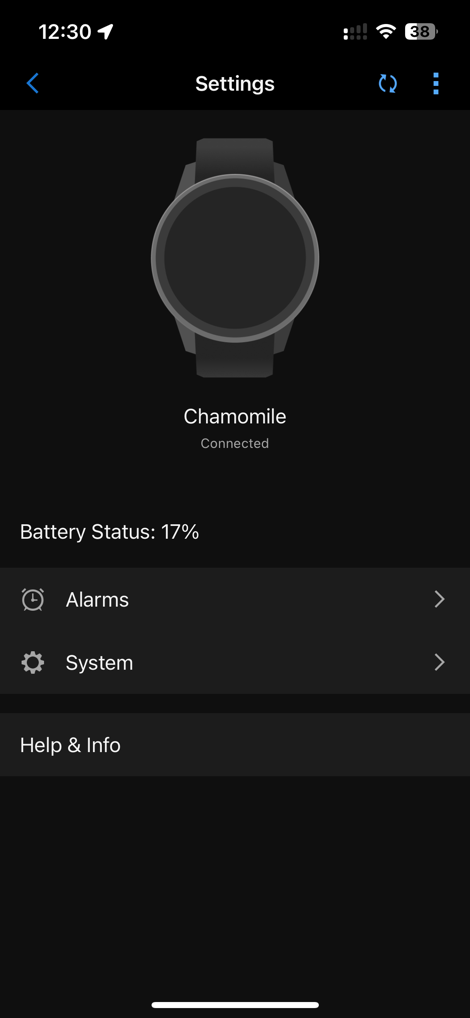
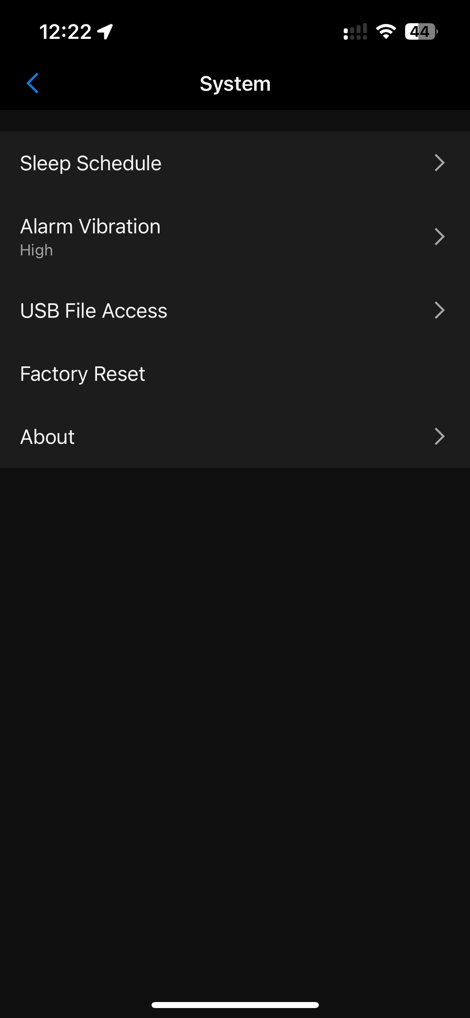
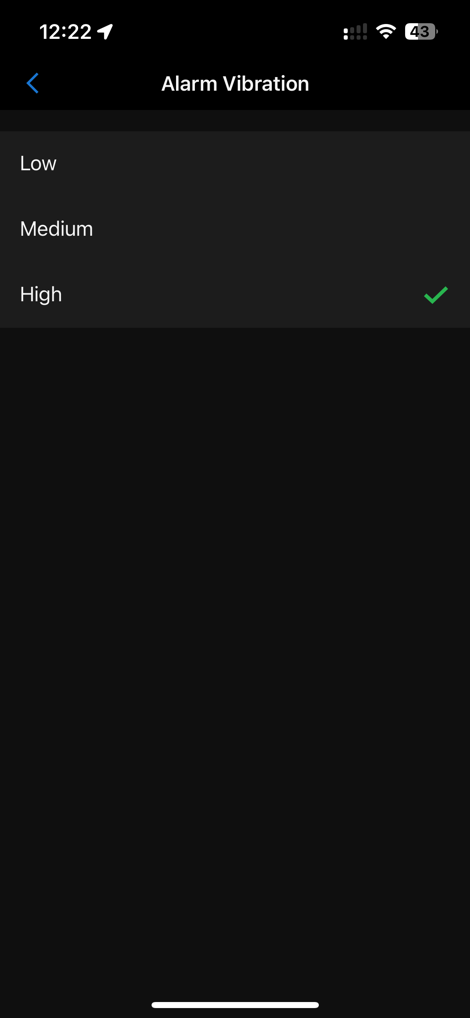
That said, over the past week, I had a highly variable schedule (since I was traveling). One morning I was up at 6:55AM, the next at 4:55AM, then at 7:45AM, then back again to 4:55AM – setting a blend of manual and smart alarms for each. The thing is though, it’s kinda a pain in the ass to set these alarms, in terms of digging through the menus of the Garmin Connect app. Sure, if I had a repeatable alarm wake-up schedule, it wouldn’t be an issue (e.g. every weekday at 7:45AM), since it would just do it automatically.
But I’d love to see Garmin add an option on the Garmin Connect app that automatically shows some sort of alarm tile at the top of GCM (Garmin Connect Mobile) as you near bedtime, to allow quick-access to alarms. Otherwise, right now the software aspect kinda feels like a (substantial) afterthought. Admittedly, I’d probably use my phone’s alarms most of the time anyway (because of how fast they are to set). But since Garmin added the alarm feature, they are at least assuming people will use it.
In any case, at this point, you simply sleep,
Now, as morning nears, and if you have an alarm set, that alarm will vibrate to wake you up. I was able to use the vibrate alarms successfully to wake me on all my nights of sleep (including for a 4:55AM wake-up time before a departing international flight…on a mere 3.8hrs of sleep). Sure, I had backup alarms on my phone set, but it was indeed the Garmin Index band that woke me up initially.
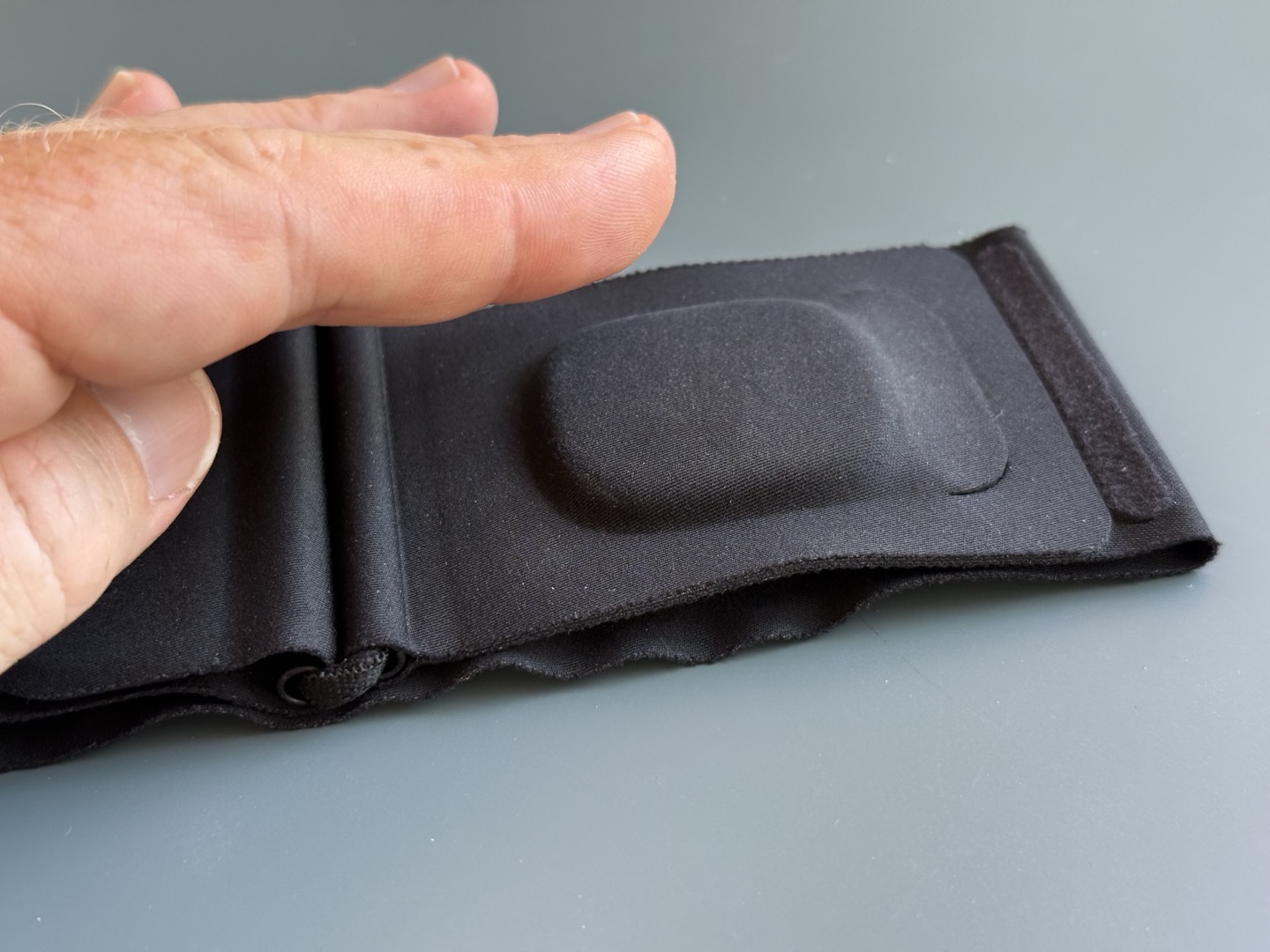
However, if you want to snooze, you can simply double-tap the band, and it’ll snooze for 10 minutes. Then, in 10 minutes, the process repeats again.
Unfortunately, though, I found that my sleep stats ended the moment I double-tapped to snooze. Meaning, if I set an alarm for 4:55AM, then double-tapped at 4:56AM to sleep for another 10 minutes (and trust me, I was hard asleep), my sleep would show as ending at 4:56AM, such as below:
Snoozing Alarm on Garmin Index Sleep Monitor:
Actual: Hit snooze at 6:45AM twice, to 7:05AM then kinda woke up, out of bed by 7:10AM
Garmin Index Sleep Band: 6:45AM (smart alarm was set for 6:15-6:45AM
Whoop MG: 7:09AM
Apple Watch Ultra 2: 7:04AM
AmazFit Hyrox Band: 7:09AM
In fact, that was the case for every single one of my nights’ sleep. No other wearable I was wearing at the time had a problem recognizing that I went back to sleep. The Whoop MG, Apple Watch Ultra 2, Oura ring, and AmazFit band all correctly saw my snooze-time as being properly asleep.
Now interestingly, if I didn’t set an alarm on the device itself, then it properly tracked sleep throughout the entire sleep phase (including when I used snooze on my phone). Meaning, a bug exists that basically ends the sleep tracking phase upon using Sleep Index tap-snooze, rather than the physiological act of my body snoozing causing the issue. Here’s an example of two days ago, without any Index Sleep band alarm set (but with alarm set on my phone, which I snoozed):
Wakeup with alarm at 7:50AM, then snoozed till ~8:00AM:
Actual: ~12:20AM to ~8:00AM
Garmin Index Sleep Band: 12:21AM to 7:56AM
Garmin Venu 3: 12:18AM to 7:56AM
Whoop MG: 12:23AM to 8:03AM
Oura Ring V3: 12:18AM to 8:01AM
Apple Watch Ultra 2: 12:18AM to 8:02AM
As you can see, no issues here at all. This correct identification behavior matched other days as well.
Speaking of that sleep, here’s how it looks in Garmin Connect Mobile (the smartphone app, it’s also displayed on Garmin Connect desktop/web too):
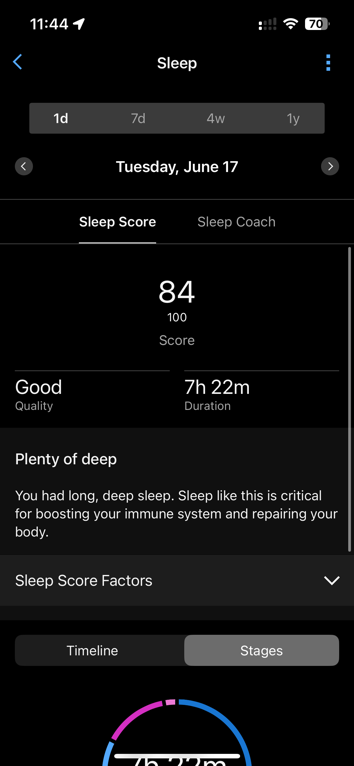
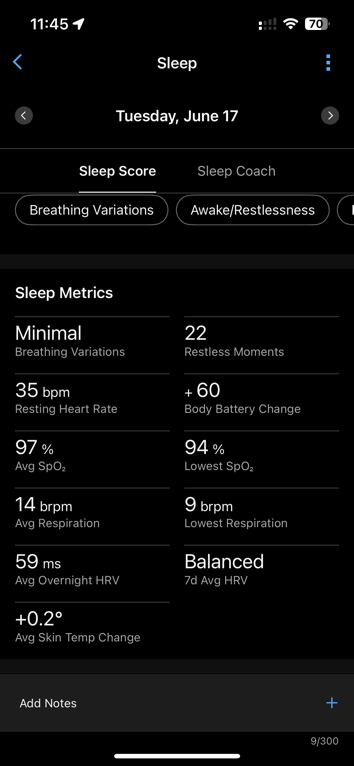
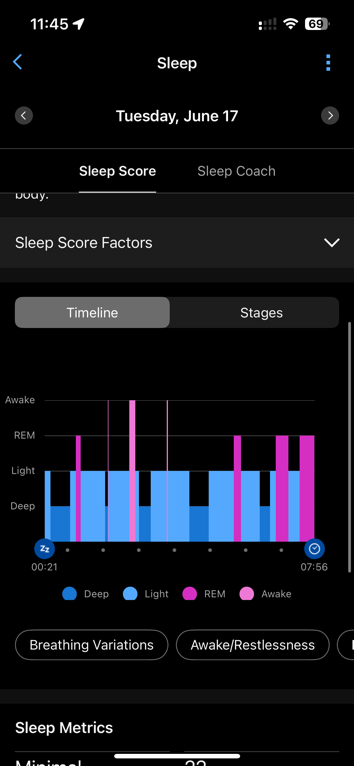

Furthermore, you can then see my sleep data properly pulled back into a watch a short time later (I didn’t wear this watch to bed, just the Index Sleep monitor):

Now, this piece can be a bit fiddly in scenarios where you quickly leave the bedroom (especially a hotel room). In Garmin’s marketing campaign video, they show someone placing their Index Sleep Monitor on their bedside nightstand upon waking up in the morning, with it magically syncing with the phone and watch near-instantly. However, whether that “instantly” part occurs is highly variable, depending on whether the Garmin Connect app in the background has time to sync before you walk away from the sleep band.
On all my mornings at home, this happened without issue. It synced, and life was great. Our home isn’t super big, so in almost all areas of it inside, my phone and watch can typically talk to each other via Bluetooth through walls.
However, last week, while traveling, things were a bit more variable with the hotel room. On other mornings, I left the hotel room quickly after waking up to grab coffee downstairs, with the Index Monitor on the bedside table. In these cases, it apparently hadn’t synced with my phone yet – leaving the watch I put on now data-less. In all cases, the moment I opened up Garmin Connect Mobile on my phone back in the room, within a matter of a few seconds, things synced and life was happy.
Point being, if you’re in a place where your phone & Index Sleep monitor might not be able to talk to each other after you take the band off, just ensure the data is synced by opening up the Garmin Connect app on your phone for a few seconds, which basically kicks them along and near-instantly syncs.
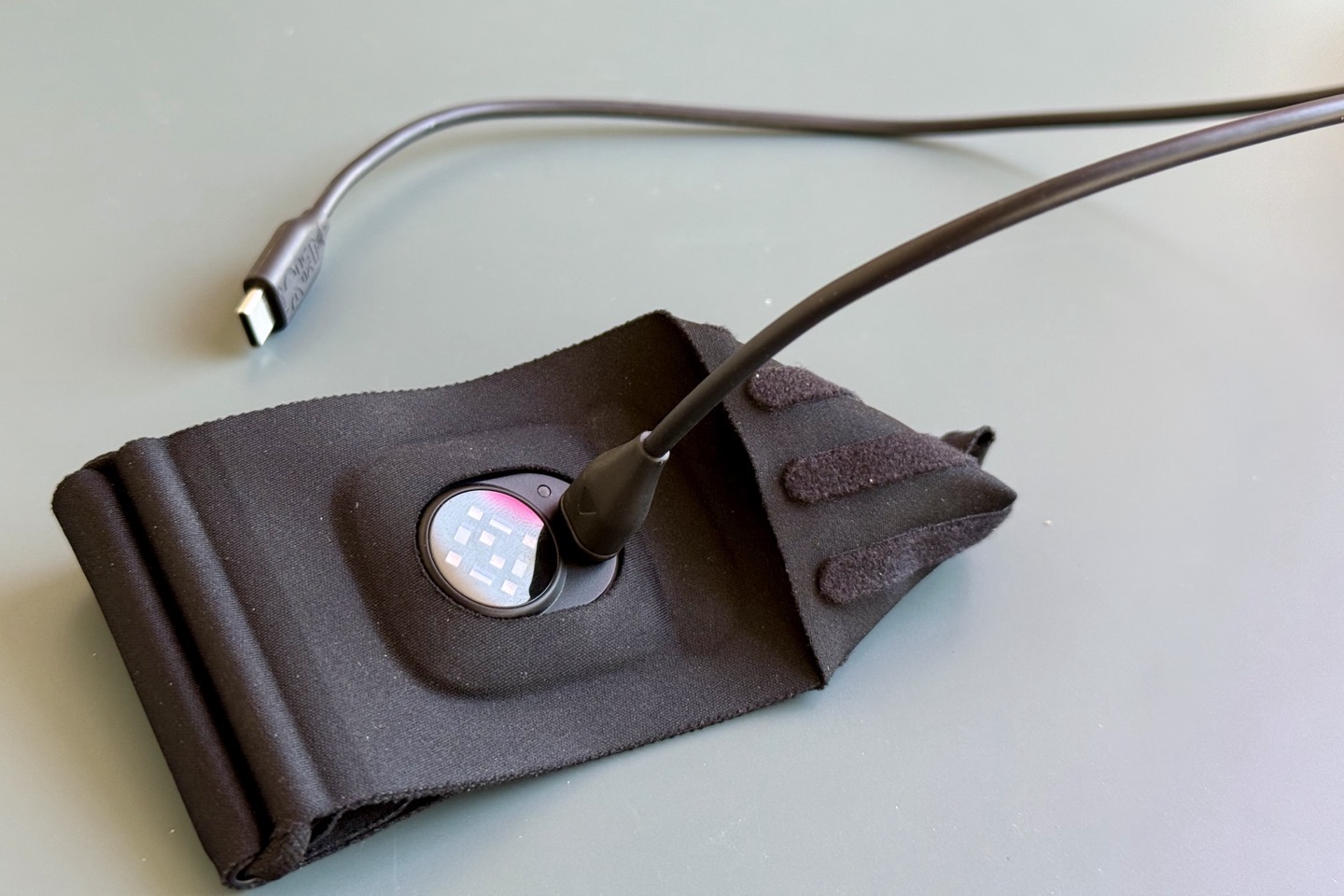
Finally, let’s talk about battery life. Garmin claims about 7 days of battery life on the sensor. My guess here is they’re assuming ~8-10 hours of sleep per night (meaning, being a bit conservative). Either way, all of my testing shows it’s trending a bit better than that. I’m seeing roughly 8-9 days of sleep data per charge, with typically 6- 8 hours of wear per day. Obviously, I don’t tend to get 8-10 hours of sleep per night, so that might skew things too. Either way, their battery stats seem good.
Data Comparison:
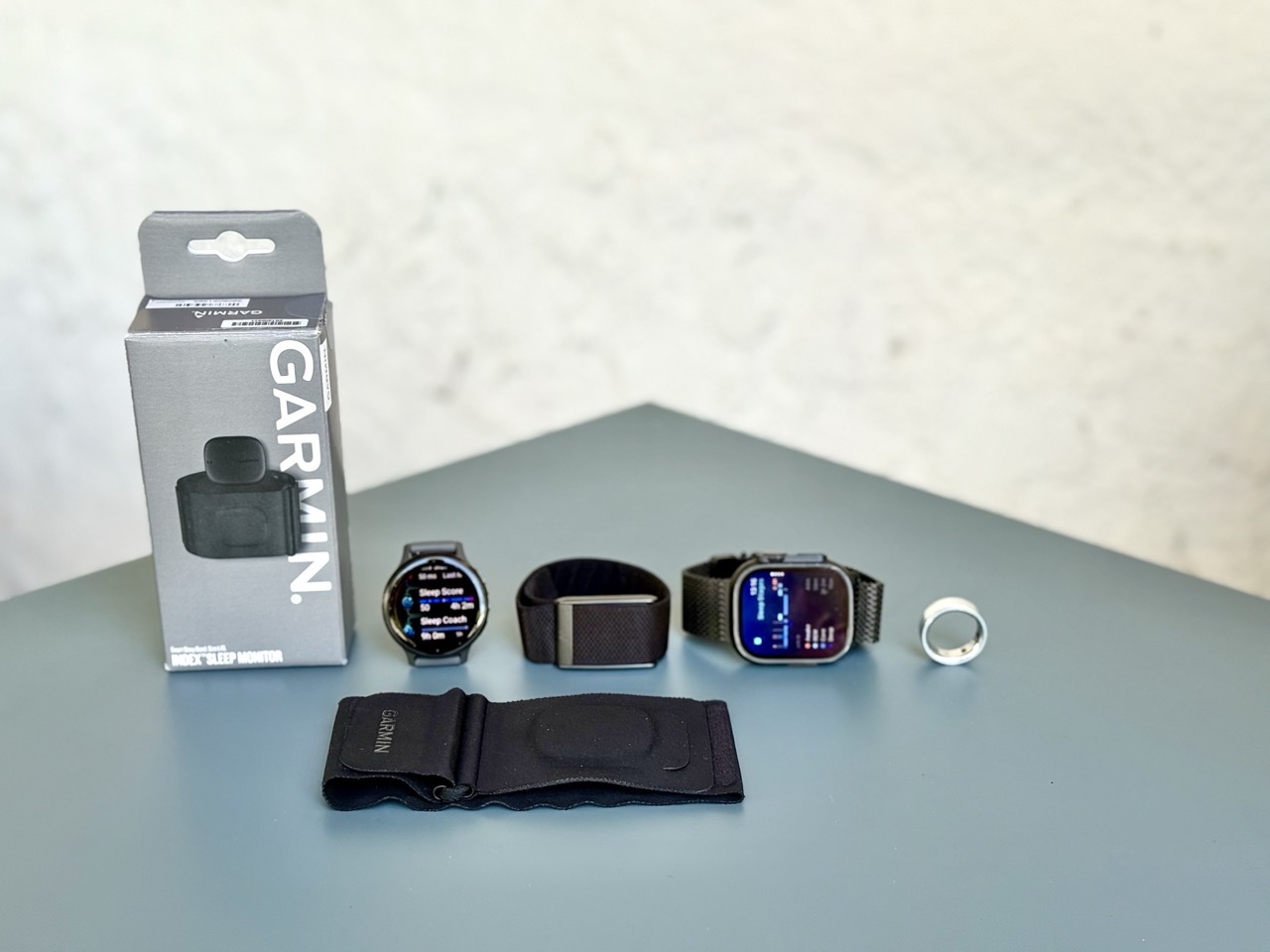
Now, I’ve already outlined a few different nights of data above, but here are a few more, with some other stats, including comparisons against a Garmin watch at the same time. I’ll note that some of my nights over the past week have either been on an airplane over the Atlantic, or otherwise dorked up with stupid early morning events.
So let’s focus on a more simplistic night that has some logical data. To begin, here’s that data at a high level between the different wearables:
Wakeup at a sensible time/cause:
Actual: ~12:20AM to 8:00AM
Garmin Index Sleep Band: 12:21AM to 7:56AM
Garmin Venu 3: 12:18AM to 7:56AM
Whoop MG: 12:23AM to 8:03AM
Oura Ring V3: 12:18AM to 8:01AM
Apple Watch Ultra 2: 12:18AM to 8:02AM
But what if we dive a bit deeper into the Garmin vs Garmin comparisons? In this case, I had a Venu 3 on my wrist linked to an entirely different account (so things wouldn’t conflict. Here’s how they compared:

Most of these metrics are nearly identical. The only one that stood out to me was the Resting Heart Rate metric on this night seemed notably different – 35bpm vs 46bpm. The 35bpm seems a bit too low for me, so I went and checked every other night I also wore a Venu 3, and they were identical on all other nights. While matching Resting Heart Rate metrics to other companies can be messy (since there’s actually no standard on how exactly that is defined in terms of time length at a given value), the general consensus for these wearables for me is the mid-40s.
Finally, one more night tidbit on comparative accuracy. Even on much less sleep, it didn’t have any issues tracking, and in fact, it easily tracked better than both Whoop & Oura. This morning, I was awakened by a small visitor, then said visitor was clanging around the rest of the house. I stayed in bed, attempting to go back to sleep, but only Garmin & Apple got that right. The others gave me an extra 30-40 minutes of sleep I very much wished I had:
Last night: Wakeup by small visitor:
Actual: Feel asleep ~2:30AM, woke up at 6:45AM
Garmin Index Sleep Band: 2:29AM to 6:45AM
Garmin Venu 3: 2:34AM to 6:45AM
Whoop MG: 2:30AM to 7:23AM
Oura Ring V3: 2:30AM to 7:27AM
Apple Watch Ultra 2: 2:36AM to 6:42AM
Anyway, the point here is that, in terms of overall accuracy, the Garmin Index Sleep band is consistently accurate not only with other Garmin and 3rd-party wearables, but more importantly, with my actual sleep times. As I’ve said many times, it’s the sleep times that I care most about. Ultimately, in most cases, if you’re getting 8 hours of sleep (and staying asleep), life will usually work out just fine, no matter what the wearable says about your sleep phases/stages.
Wearing it 24×7?

Ok, after publishing this in-depth review, a ton of you asked what would happen if you wore the band 24×7? What metrics would come across, how would that work, and how does it handle workouts, daily activity, and everything else?
Fear not, I’ve got a dedicated post diving into all those details across a complete 24 hour period, showing exactly what it does (and doesn’t) capture. Or simply click Play on the video above. Your choice.
Wrap-Up:

As I said at the beginning, this product won’t be for everyone. In fact, it’s almost entirely just for Garmin smartwatch-owning people who don’t want to wear a watch to bed. Sure, there will be a handful of non-Garmin watch people that’ll use it to track sleep, akin to other sleep monitors, though I suspect that’ll be a small number. To that extent, regardless of which group one might be in, this product does a good job at doing what it says it does.
Even setting aside the software elements of it, I’m honestly just most impressed with the hardware aspects. The device is far better than the marketing materials make it seem. It’s super lightweight, incredibly comfortable, and has reasonably good battery life. Garmin noted they had minor concerns that people might forget they were wearing it, and simply go about their day. And I could totally see that, especially if you were in a hurry to get out the door. Point being, as is usually the case, Garmin tends to be strongest in their hardware, and that shows here as well.
Of course, it’s not cheap by any means. Though I’m not sure we’d have expected otherwise, it’s Garmin after all. There’s no subscription cost here, but then again, most sleep-only trackers don’t have a subscription cost unless they have some other feature/functionality (e.g. a mattress that somehow requires a subscription). There are really no features of Garmin Connect+ that would meaningfully leverage the Garmin Index Sleep Monitor as a standalone device (even the barely useful GC+ AI insights are almost entirely focused on activity data, not sleep data).
All of which then looks at the elephant in the room: Is the Index Sleep Monitor a precursor to Garmin making a direct 24×7 Whoop-like band competitor? I think the answer is, obviously. I don’t think that’s really a question. In all my conversations over the years, Garmin has consistently said they aren’t opposed to such a product down the road, but simply they had higher-priority products to build. To me, the Index Sleep Monitor seems an awful lot like Garmin trialing some of these components/workflows. The bigger question is when, how much, and whether a subscription cost is involved? I suspect Polar’s announcement yesterday will play (heavily) into those decisions, especially given how strongly people seem to be in favor of what Polar is doing conceptually (sans-subscription).
In the meantime, if you’re looking to get sleep data into the Garmin platform without wearing a watch, this seems like a strong solution at a premium price.
With that, thanks for reading!
Found This Post Useful? Support The Site!
At the end of the day, I’m an athlete just like you looking for the most detail possible on a new purchase. These posts generally take a lot of time to put together, so if you're shopping for the Garmin Index Sleep Monitor or any other accessory items, please consider using the affiliate links below! As an Amazon Associate I earn from qualifying purchases. It doesn’t cost you anything extra, but your purchases help support this website a lot.
And of course – you can always sign-up to be a DCR Supporter! That gets you an ad-free DCR, access to the DCR Shed Talkin' video series packed with behind the scenes tidbits...and it also makes you awesome. And being awesome is what it’s all about!


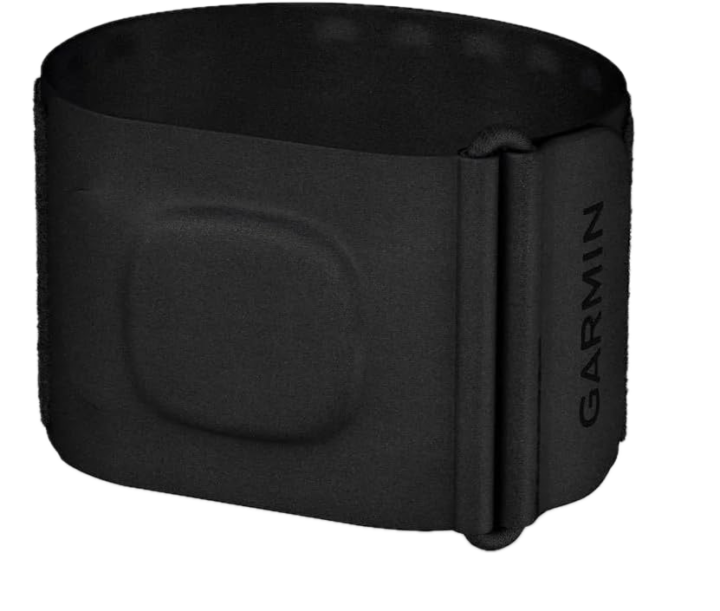

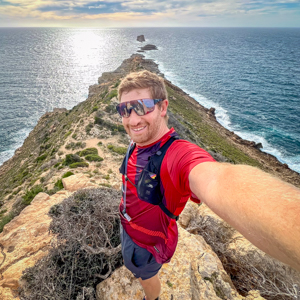






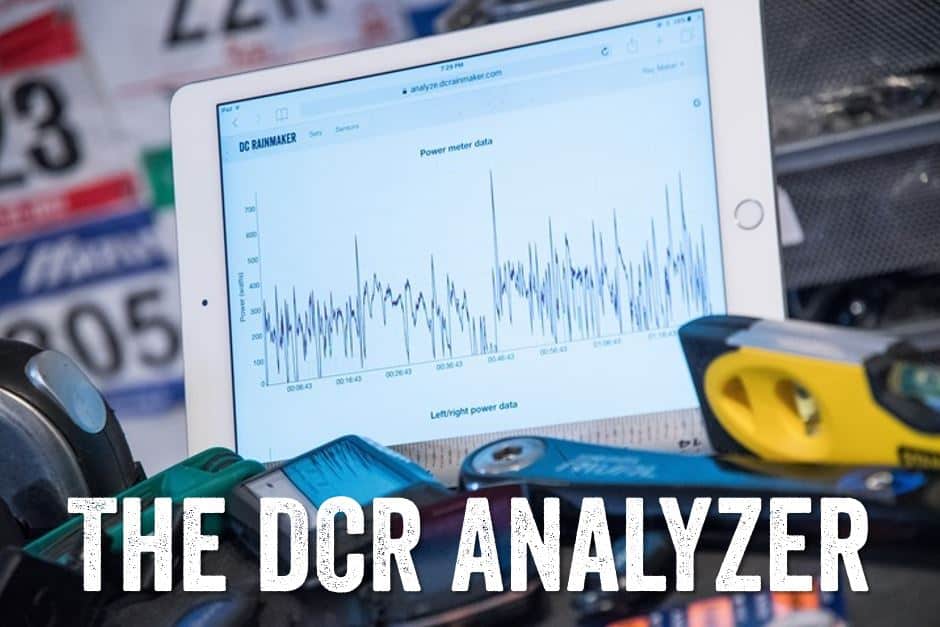

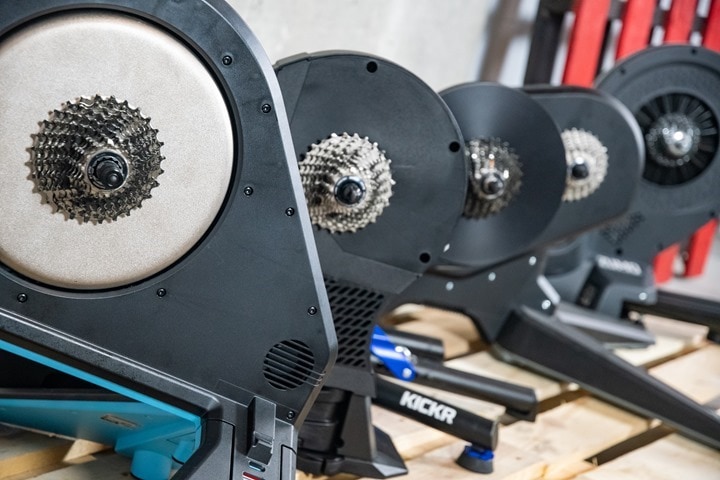
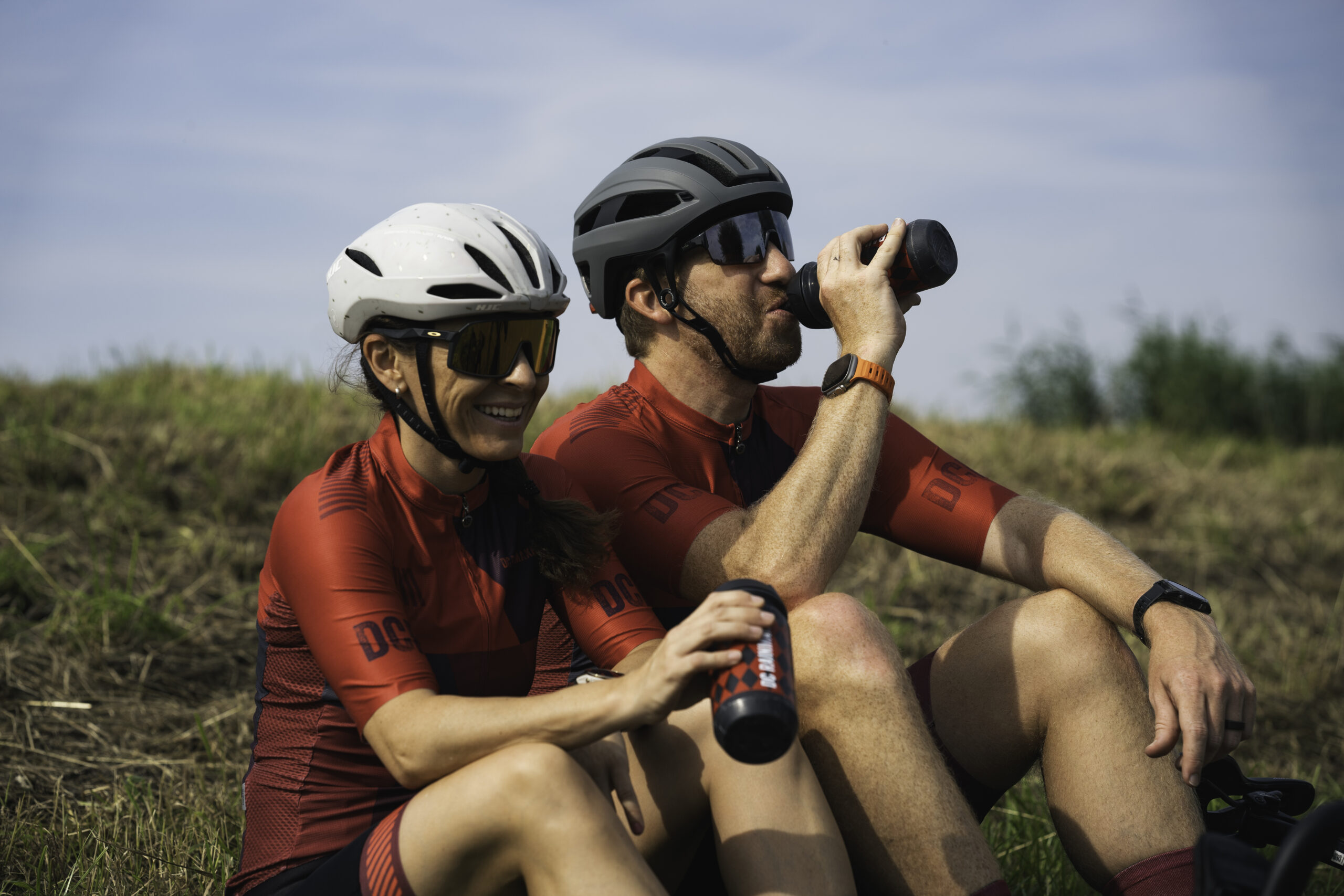
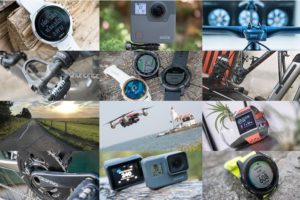
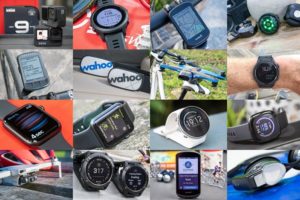

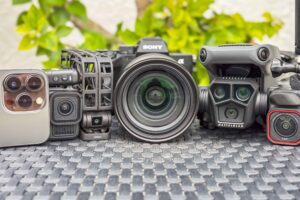

What happens if you wear it the whole day? Do they software block you?
Same qestion. Does it measure BB, Stress and recovery during the day
It simply doesn’t do anything once you wake-up. I’ll try and wear it all morning or something and see if it fills in Body Battery data, but at present it seems to end it as soon as I wake-up before I put on my watch (or, perhaps that’s just coincidence).
It’s purely for nighttime data, so otherwise, just wearing it around simply burns battery for fun.
Thank you. There’s massive interest form people, who like me like analog watches, but still stress, body battery, training readiness, HR etc. daily data has some usefulness…
Activity tracking and steps seem to be software blocked, but yes, it would be nice if it still uploaded HR data, and that updated things that rely on HR data like body battery, calories, training readiness, etc.
Not sure why they will not allow HR and step tracking during the day. People will still need to buy a watch to track activities.
Actually, holy cow, it’s doing exactly that.
I took off my watch about 45 minutes ago (at 2:15PM, now 3:00PM), and it’s backfilling in 24×7 HR data, Body Battery data, PulseOx data, and Stress data. It is not updating step data. Woah.
Will leave it on for a few more hours.
One more reason to keep wearing your watch at night…;-))
Like others, I’ve been waiting years for Garmin to come out with a decent non-watch tracker with full body battery. Following this here to see how the date shapes up outside of sleep!
That’s awesome! Are you able to turn off pulse ox? To should address the battery burn issue?
And come on Garmin – enable step tracking!
I’m also heavily interested in this as I wear a mechanical watch during the day and would like to get rid of the garmin on the second wrist (luxury problem, I know). Best would be a whoop-like non-distractive band offered in many options to choose from.
Could it be used as a Bluetooth broadcasting HRM?
lol
Perhaps an odd use case, but I would actually use this for cycling… just to get the Body Battery to update. This is because I don’t like wearing my watch on long rides (just a comfort thing), and Physio TrueUp / Unified Training Status does not include Body Battery (at least not from Edge devices), making Body Battery completely useless anytime I do a decent ride.
Of course, there’s no reason Edge devices couldn’t supply the relevant data for the watch to update the Body Battery (they probably already do) – so perhaps now Garmin will update current watches to use that (since they obviously support it from the Sleep Monitor). But in the meantime, I would prefer to wear this “Sleep” monitor on my upper arm than my watch, on long rides. Though I’m not going to pay AU$300 for just for that (and I’m happy sleeping with my watch on).
No turning off pulseOx, but, surprisingly, I don’t think that’s a meaningful battery burn aspect anymore. It used to be, for sure. Like, massively so, to the point it was almost worse than running the GPS.
But I did some testing with it on/off on back-to-back nights on the FR970, and the difference was literally non-existent. My guess is changes made with the Gen5 sensor, and perhaps quietly in the background in the lead-up to this device (sharing that same sensor), negating the extra battery burn.
And what are the results? Does it track data after wake up during the daytime?
So if this is capable of tracking steps and activities (not sure if that is confirmed or not) presumably Garmin could update this to just be something you could wear all day? Even if this just had all day HR and steps tracking capability, I would buy it right now since I don’t love wearing the Garmin all day just to track those things (I personally don’t mind putting on my watch for activities though)
After waking up, without a watch, it’ll track:
– Heart rate
– SpO2 (PulseOx)
– Stress
– Body Battery
It does not track steps.
Without getting myself too excited… but does this mean I could potentially combine say a sleep band and an HRM pro or other device which does update steps and go about my day watch free?
Granted this isn’t an ideal solution but I’d certianly consider it for various situations where I want to wear a nice watch
The HRM Pro, etc won’t track steps unless they’re actively recording, and that would drain the battery pretty quickly. If you just want to add steps to whatever metrics the Sleep Monitor gives you (while not wearing a watch), then maybe you could get a vívosmart 5 (or even on older, secondhand vívosmart 4?), pop the device out the wrist band, then put the device in your pocket, or tuck it into your sock, or something? Would definitely be an interesting experiment.
Sure hope they don’t kill this as people find out about it via an update. Might actually be worth buying now. I don’t care about steps, and if I did, there’s a million ways to track them. Garmin’s not even all that great at step tracking anyway.
As a wearer of mechanical watches that currently sport two watches (mechanical + Garmin), this tracks everything I want it to for non-workout (hr-related metrics like are, body battery etc). This thing just a 3rd-part-strap (read: woven strap that doesn’t look like women’s underwear) away from being exactly what I want it to be!
Great Indy, Ray. Is this update to pulse ox efficiency true for all Gen5 sensors or just newer devices with Gen5 sensors? I have an Epix (Gen 2) with a Gen5 sensor. I have pulse ox turned off solely because of the battery penalty, but I would gladly turn it on if it has minimal effect on the battery.
Interesting finding about Body Battery as it doesn’t seem to factor in rides. Does this mean your Body Battery level doesn’t drop after a ride?
I typically train in Zone 3–4.
In any case, the Garmin Index Sleep Monitor isn’t exactly thin due to the bulging sensor. I doubt it would fit under a race-cut jersey sleeve.
I wear Garmin Index Sleep for 5days and don’t have Training Readiness score and Morining Raport. Why?
I train only with Edge 840.
Typo – “In all ym conversations over the years,” should be “In all my”
I think this product is an interesting one versus the Withings Analyzer/Sleep. I appreciate the extra data and freedom of where you sleep on the bed, but it still requires wearing a device.
Thanks!
IMHO, wearing a device isn’t a problem. It’s the fact that you need to put it on / take it off that is a problem. I’ve been using Withings Sleep for years and the best part about it is the fact that it just works. No buttons to press, no devices to wear, no modes to toggle. Sure, there are some limitations there (no pulse oximetry, for example, although it has sleep apnea detection), but other than that it’s a perfect “set it and forget it” device for automatic data capture.
169USD was about the price I expected for s device like this. Now I’m just waiting for some independent testing of the sleep stage detection. My previous experience with Garmin’s sleep stage detection has been less than optimal.
Without wanting to do the math for each outcome parameter… you would probably need quite a few subjects studied over a prolonged time. And you would have to do proper polysomnography etc.. Do you know anyone wanting to cough up that kind of money outside of medicine. I don‘t.
Great write-up, as always. Though with the amount of content you have been publishing over the last couple of weeks, when did you find the time to sleep in order to test this? We appreciate all of it.
It probably already has most (if not all) of the sensors required to make it a 24/7 device. Could be updated via Firmware?
It does. could also be used as an external HR monitor. But the chances of Garmin providing feature updates to this are zero.
I assume you can’t use it as a arm optical heart rate monitor for workouts?
I assume so as well, it’s a pity. But it doesn’t seem like it’s accurate anyway, at least not for the RHR part. This could have been a really nice multifunctional product, Garmin missed with this release.
No step counter? Need to know for those nights I sleep walk 🧐
Another use case (apart from people who find wearing the watch to bed uncomfortable) is overnight charging – with the proliferation of AMOLED displays you need to charge the watch more often so it might seem logical to just leave it on a charger overnight and use this strap for sleep tracking.
The only issue is, of course, not forgetting to put the strap on.
Unless you use the new X1 on AOD, there is no need for any Garmin AMOLED watch to be charged every night.If that were an Apple band, it would make total sense. though.
It’s not every day, but it’s also not once per week like I had with Fenix 6 or Forerunner 955 – at least twice per week for me with the brightness on low, AOD on and the same amount of workouts.
This band would make more sense when it could be worn in additon to your watch and tell your watch to switch of all sensors once it is activated and thus extending your battery life by what…20%?? I am used to wear my watch at night because I don’t want to look for it on the bedside table IOT check time and when I need to get up and want to use the flashlight (that torch works best in darkness). It would be perfect when the watch would detect the band and ask you if you want to switch off all sensors. I imagine that is an easy fix. But until then, I won’t buy.
This is a great idea
+1
Brilliant and not much code in the phone app. I would buy immediately to simply increase the convenience in my life. I get sleep data. I get longer periods between having to take off my watch and charge.
Right now, I have a fundamental tension between quality of sleep data and battery life of my watch. If I want the apnea detection stuff, I have to enable pulse OX overnight.
Interestingly, this would be zero firmware on this device, it does it’s thing obliviously. It is just phone app features to configure the watch for “off duty” sleep mode and back.
My 265 lists an option under sleep mode to enable battery saver. That plus turning off pulse ox during sleep would probably combine to save a good bit of battery life.
Are there any metrics that this band tracks that aren’t tracked with a Garmin watch? In other words, if you wear a Garmin watch to sleep, would this provide any additional metrics? Sounds like perhaps slightly improved sleep detection with this vs. a watch but no additional metrics?
The smart alarm seems like the only new feature.
My bad, as per comments below, smart alarm was released on the vivoactive 6, but omitted from the new Fenix and Forerunner devices. Way to go Garmin. 🙄
Is this the Elevate v5 array?
Also curious if there is any benefit to using it if you don’t mind wearing your Garmin watch to bed? E.g., the 965 does not have skin temperature, but I’m not sure that matters outside of tracking ovulation cycles (which wouldn’t apply to me).
Yes, an Elevate Gen5.
Outside of skin temp, everything else is tracked by most watches (and skin temp in other gen5 watches).
I take it, it won’t activate summaries/reporting your watch doesn’t support if you have an older watch that doesn’t support features like Training Readiness.
Great write-up as always!
“Whether or not you agree with this product (or its price)., what he’s saying is factually true – no matter the wearable company.” I think you might be missing something in the middle or before this sentence because it’s unclear who the “what” and the “he” is referring to (though maybe I missed something!). Was there a quote from a Garmin rep?
Does it transmit HR over Bluetooth/Ant? I’m wondering if it’s possible also connect to the watch during workouts for more precise HR data.
Very intetested here too, an alternative strap for workouts could make this much more appealing, especailly to cyclists using a watch
@Ray is there a hardware limitation keeping it from being able to do AFIB detection, or is it a lack of jumping through all the certification hoops?
I actually can’t wear my watch 24/7 and therefore need to take it off when I go to bed because if I don’t I get skin reactions.
I would probably buy it today if it did nighttime AFIB detection.
Recording an ecg requires an electrical circuit. For instance in Garmin watches the metal around the SpO2 monitor functions as one lead. The circuit is closed when you touch the bezel with your other hand and a single lead ecg ist generated. With only one point of contact there’s no ecg. Single lead chest wall ecgs use the average of the extremity leads (Wilson lead). Thus, unfortunately your idea is technically not feasible. Sorry!
Apple Watch has afib detection during sleep, so technically it is possible. They do this without an ECG, not sure what’s the technology involved.
A sudden change in heart rate with irregular pulse curve could be indicative of afib but without an ECG you cannot seriously analyze rhythm disturbances.
Looked at it and you need to declare that you have an AF diagnostic to activate that option. So then it starts trying to look at patterns during sleep to understand if you have periods that look like AF and then at the end gives you a % indicator.
So yes, it’s not really detecting AF, it’s just saying “look I know you said you have AF and during sleep we detected strange HR about 20% of the time”. Still that sounds like what the OP was asking about. Otherwise the probability of pickup AF during a spot check is pretty small most of the time. You would need a Halter hooked up 24/7 for that.
Ray, do you know if the smart alarm will find its way to the watches (at least the latest platform: Venu X1, Fenix 8 series and Forerunner x70)?
The Smart Wake Alarm is currently on the Venu X1 & Vivoactive 6. It doesn’t appear to be on the FR970 or Fenix 8 though.
Not sure why Venu X1 got it, but not FR970, but then again, those products are super-tight in release dates, and often when Garmin gets close to release, they basically separate out incoming new things temporarily, and then in the next quarterly update we see them get reconsolidated.
I could be interested in this. I have an instinct 2. But garmin is known for not having really accurate HR data compared to apple. Im wondering if this could fix that problem with with sleep data.
How smooth is taking off the band, putting on the watch and seeing the morning report? Do you see the report as soon as watch is on the wrist?
Why is the battery life so short? (7-10 nights of sleeping)
It doesn’t have a screen and looks to be similarly sized compared to a smartwatch (slightly smaller)
That’s a good question. It really seems like a normal sized smartwatch body and there’s no screen. Also it will work about 8 hours every day, so that’s only about 3 days worth of total battery time.
Maybe the refresh rate is much higher than a normal smartwatch during sleep? Also historically Pulse Ox took a big chunk of battery if activated during sleep, but for elevate 5 that doesn’t seem like it matters much.
Hello, I’m currently using a CPAP and was just curious about related data that it doesn’t track like O2 and HR and a more in depth breakdown of sleep apnea events. I’m not looking for medical grade equipment options (or associated costs) and my insurance doesn’t approve of the attachments to the CPAP that could do this.
Would this device be a decent option or would you suggest another product like those in your comparisons? I do have a Garmin account and a couple of watches if would make any difference on suggestions.
Check out the SleepOn Go2Sleep 3. It’s a capsule that can be worn as a ring or on fingertip. It captures Oxygen Desaturation events, etc., which you can compare to when you are wearing mask or not.
GoSleep 3 seem like a technology advanced devices. The question is – SleepOn devices sync with the Garmin ecosystem?
I’m a firm believer that all health metrics should reside in a single source of truth, rather than navigating across multiple apps just to connect the dots of our well-being.
I truly get excited about new devices with advanced metrics but navigating through multiple ecosystems is a showstopper. I’m a die hard fan of Garmin Connect for over a decade.
I think a product like that would make more sense if it captured all the metrics of a watch when you don’t want to wear a garmin watch (prefer to wear a normal watch but want the metrics for a garmin ecosystem.
I think this would be a much better way to upgrade watch sensors instead of buying a new $10000 watch. Keep old watch until it breaks and buy these band sensors at $160 every year or two. When sensors update.
Also this would be a good price for an all day screen less device hopefully they will eventually unlock it and not restrict it to just sleep or have a all day one that has double the battery. For ~$200.
If this was much better at measuring sleep than my Enduro 3, I would be happy to pay the price.
The Enduro 3 is just ridiculous bad at detecting when I am awake and when I sleep.
It doesn’t even notice that I got up in the middle of the night, let the dogs out, and got them all in again, which not only adds quite a few steps, but also two sets of stairs.
It mostly just takes my set going to bed and wake up times.
Will we get the smart alarms on the Fenix & Enduro too?
If your sleep tracking actually doesn’t recognize you waking up and walking stairs (!) your watch is 100% defective. I’m sure Garmin Support would want to know about this, and take very good care of you.
I have called support 3x in 10 years and they’ve been amazingly helpful every time. The people on the phone are true product specialists.
Nice review. How did the numbers compare to the Oura ring? I find that my Garmin fenix 7 overstates my HRV by 10-20ms every night. In particular, I’m curious how accurate the HRV and body temperature data are.
It seems like you are not the only one link to muscleoxygentraining.com.
In his case Garmin HRV is also grossly overestimated compared to a whole night measured with a Polar H10.
Would this work well for someone that only has a Edge device and wanted sleep data to feed in to their training metrics? I recently replaced my fenix with a AWU but i still do all my cycling workouts with my edge 1040.
Is there a way to turn off the Bluetooth connection at night? I always set my Garmin Fenix 8 to airplane mode to avoid the extra (albeit small) radiation exposure during sleep.
Good question. Plus it sits higher up on the body. Something like triple tap to switch on bluetooth and upload will be cool. Will save a bit of battery life as well.
Did you know that putting your watch into Airplane mode does not switch off Bluetooth?
I routinely leave my 955 watch in Airplane mode, but when I get an incoming call on my mobile, it rings.
I contacted Garmin support, they confirmed this was indeed the case.
I wanted a sleep tracker that does not transmit at night.
I trialled a Muse S sleep tracker, unfortunately that transmitted at night (as confirmed by Muse), so it was returned.
You can switch Bluetooth on/off in the Connectivity section of Settings.
Why you would want to stitch it off is beyond me though…
Airplane mode absolutely should switch Bluetooth off.
Ah, that worked.
Thank you, SG!
The setting was Connectivity > Phone -> Off, but it looks like it disables Bluetooth.
Note that Airplane mode must be OFF to access the setting.
Yes, Airplane Mode needs to be off because it already switches off Bluetooth connection (so would be redundant/there is no more connection to the phone that can be killed).
> Yes, Airplane Mode needs to be off because it already switches off Bluetooth connection
Riddle me this: If that’s the case, why does my watch “ring” when I get an incoming call on my phone with the watch’s Airplane mode activated?
Simple answer: It should not (ie, the watch should not ring in Airplane mode when there is an incoming call on the phone), otherwise there is something wrong.
The quantified scientist had a review of the app Sleep2 (in the review with the old name) with a Polar verity sense (or H10?) and he said it’s the best for sleep tracking at home.
link to youtu.be
My point:
If somebody use a Garmin watch, that new hardware is useless.
There would only have to be one reason to buy the device:
It records sleep much better than the Garmin watches.
But I doubt that this is the case.
I assume that something like the Sleep2 app simply uses much better algorithms.
Can you describe the study design, materials and methods, statistics, results and the conclusion. A link to the publication-which I unfortunately could not find- would be great! Thanx!
There is no research paper or documentation. It’s just a YouTube video. n=1 sleep session/activity. The device he compares it against is less than 90% accurate. Also, he doesn’t wear multiple devices at once, so all of his chart comparisons comparing different devices, are of different activities/sleep, so environmental variables are totally ignored. For a guy who loves to flaunt his Phd status in every video, his methods and documentation is very poor.
When DCR suggested this price will cause a double take, was anyone else expecting $399 or so?
When they add the option to use it as an external hr monitor during activities I would buy one. I don’t really care about steps, because I’ve got my watch to do so, although in certain situations the biceps would be more correct in that.
They could make it as simple as using any other hr sensor.. although it would probably be smart to have multiple bands because of sweat..
Do we have a list of compatible watches? I like the idea of not wearing my watch at night
It’s compatible with all watches, because it doesn’t actually require a watch. ;)
It can be put directly on a Garmin account that has no other devices.
Doesn’t the watch have to support the relatively new Body Battery Trueup feature so the Body Battery syncs over from the sleep band? Or will Garmin update older watch models to support Body Battery Trueup?
Hmm, interesting question. Trying to figure out a viable way to test that on my account.
For me, the difference is:
– Any BB Trueup enabled watch will fetch the latest value from Connect
– Not enabled watches will guesstimate a BB value loosely based on time of day, about 70 in the morning, 50 at noon, 30 in the evening, and start from there.
– When changing back to a BB Trueup watch, the stress data of the non-Trueup watch is synced back to Connect, the current BB value is calculated and then synced back to the BB Trueup watch. (Btw some watches will also receive the stress data from other watches, such as the Fenix 7, but others will not, such as the Forerunner 255.)
Now in the case of the Index Sleep my guess would be that it behaves like a BB Trueup watch, happily accepting the current BB value.
But with no BB Trueup enabled on the complementing watch, let’s say an Instinct 2 series, the BB score would just be estimated in the morning like it was in the past when one would switch between two non-Trueup watches.
You could try wearing a non-Trueup watch after getting up to see if the BB value carries over. My guess would be that it doesn’t since the Index Sleep is basically just a watch in a different form factor.
A little hacky but can you remove the quickfit straps from one’s watch and slot it into the sleep band? If it sufficiently fits, wouldn’t that go a long way towards solving the discomfort issue?
There appears to be a listtof compatible watches on this page: link to support.garmin.com
It’s right after saying: “For example, the Index Sleep Monitor syncs your sleep data with your Garmin Connect account, which then shares this data with your watch.” So sort of implies that’s what the the compatible list is relating too, but it’s not really explicit.
Oops. Was meant to be a reply to Ben R above.
Thank you very much for the thorough review. I am a bit underwhelmed with the actual function and sad that Garmin missed an opportunity to build a device could be worn throught day and night instead of a watch.
On a unrelated note: could I maybe tempt you to join the group of people who correctly call the singular upper arm muscle biceps, and not bicep? It has two heads, hence the name.
I have an Apple watch I wear during the day. I use a Garmin Edge to track my cycling, and I sync all my workout activities to Garmin Connect. If I add this sleep band to track my sleep, will I finally get data points in Garmin Connect like fitness age, body battery, etc.? I am too tied to my Apple watch to switch to a Garmin watch for daytime use.
What happens if you wear the Index Sleep Monitor and a Garmin watch at the same time which are linked to the same account. Will the data from the Sleep Monitor override the watch data or will the watch data just stay as it is?
I was wondering about the same thing. A “smart merge” would be best.
Can you wear it on your.. leg?
Bryan Johnson is that you? You are not really talking about a leg are you? Just kidding…
Having no problem sleeping with my Venu 3, I really se no value.
And with no extra data or accuracy, should I start too feel uncomfortable wearing watch on wrist while sleeping, I could just wrap my Veny 3 in wife’s panties and tie it around upper arm 😏
it would be nice if this could also be used for training, instead of a chest strap. This may also be niche, but there are potential advantages:
– maybe higher accuracy than OHR on the watch (because more blood flow / more soft tissue?)
– more comfortable than a chest strap
My guess is the hardware is fully capable to also work in “full power mode”, maybe Garmin would just need to add this in software and offer a different strap (which is optimized to moving/sweating)
EXACTLY!
Does it work for napping?
> Unfortunately, though, I found that my sleep stats ended the moment I double-tapped to snooze.
I have a similar pet peeve with my Fenix watch. As soon as I interact with the morning report (say to see how long I’ve slept, eg to see if I should maybe get another hour or two), it stops tracking sleep.
Reminds me of their scales, Bp cuff. There’s nothing especially impressive about their design or features, they’re expensive, but their quality of build is notable. With Apple, it’s all about the user experience. But with Garmin it’s about making accessories that are fairly unimpressive, don’t have the best app experience, but have refined build and hardware to the extreme. Their accessories just work and work well but I’d like to see a bit more flash like in their main product lines personally.
The scales are a mixed bag.
Around 2016, the first generation couldn’t upload the data for 1,5years because it tried to reach a NTP Server wich was located inside Garmins own network and most time not reachable.
Mine did its last upload march 19th, since then it just doesn’t send data. If I connect it to a network, the checkmark appears but it doesn’t transmit. Doesn’t matter if it’s my WiFi or a hotspot.
The biggest selling point of all index devices is compatibility to Garmin Connect. Better not to compare the BPMs, scales etc to Withings hardware. Even the app used to be better, especially for multiple weight ins per day.
Selling the Withings scale before buying the Index is a thing I still regret at some days.
A real whoop competitor I would have bought directly to go with analog watches, but now I’m just not sold. With my nylon bands I can wear the watch a bit further up my arm and it’s really comfy at night.
I would agrre to disagree with you. Indeed Index Scale v1 was quirky at times but it is still working (bought almost 7 years ago). On the other hand a withings blood pressure device never uploaded anything even being connected to wifi in multiple locations.
I stopped wearing my Fenix 7s to bed because I was getting contact dermatitis – my GP gave me a steroid cream to settle it down, which worked, but whenever I try wearing the watch to bed, it recurs. The battery on the 7s died, so I got an 8s to replace it (the “extended care” warranty basically refunded me the purchase cost of the 7s), but the same issue recurred when I tried wearing that to bed.
All of which is to ask: is the build or location of the sleep sensor sufficiently different that it might plausibly fix this problem for me, or does it look like it is sufficiently similar to the Fenix watch backs that it’s probably not worth spending the money? It’s now at the point where I basically only wear the watch when I’m actively doing something, recovery metrics be damned.
I would say that the probability of a problem is minimized because you can use the band anywhere along both your arms, and even rotate it if needed, so as not to overwhelm a single skin spot. Also since this is not used during the whole day and there’s no accumulation of sweat below the band, it should be relatively safe.
As a sporadic sufferer of contact dermatitis myself, usually the flares are related to histamine overload, the skin flare is “just” a symptom and a warning sign that I need to change something (usually that means avoiding high histamine foods, alcohol, stress and heat for a while, yup I sort of go monk mode).
I don’t understand, if you’re going to these lengths why not go full on whoop competitor?
I don’t mind sleeping with my Fenix 8, but I would LOVE to have all of the metrics within the Garmin ecosystem for the days when I feel like wearing a luxury watch (and wearing two watches is a big no-no, at least for me).
Hopefully this is coming soon?
Between this and the HRM 600 that can be used without a watch, it’s probably in the works already. If the Polar and Amazfit bands do well in the market, my bet is that they will step in.
While interesting, my watch only gets charged once a week and tracks my sleep and daily activities. The battery life is honestly why I don’t use an Apple Watch exclusively because I would never wear it while sleeping because that’s prime charging time. Now if this device could fill in the Apple gaps 🤔.
Hi Ray,
if you have a Venu X1 available, could you please give it a try and put in the sleep monitor strap?
Just tried, the Venu X1 definitely doesn’t come close to fitting. A very solid 1cm+ short vertically, plus more in width. And then that sets aside the fact that the poles would be jabbing into your skin (pic attached). However, in my next comment I’ll show the Venu 3S…
Next, we’ve got the Venu 3S, which actually does fit just fine, and seems nice and snug. I worry that the poles would eventually poke…well…holes, into the fabric over time. But otherwise, all good, and I don’t feel the poles at all on my arm.
Thanks for checking this! :)
Too bad this doesn’t work with the X1 (it’s flat and light). Oh well, maybe with a DIY strap…
How about an Apple Watch? Ultra probably not, but the 10? Garmin does sell the straps separately, right?
So, assuming that the biceps position is somewhat better in terms of location of muscle and bone and blood vessels versus the wrist (something which calls into question the logic of all wrist-based readings if accuracy is the goal), why not just use a Venu 3 with a watch band extension strap at night, at least? Then move it down to the wrist during the day, for convenience. Garmin could have added their recently patented sensor pressure system to improve upon the Elevate Gen 5 sleep data accuracy, but hasn’t. The fabric width may also serve as a shroud to block out light, but that’s not much of a problem at night and you could cut up an old black sock for the same result.
As mentioned elsewhere, the PPG data itself, no matter the collection accuracy, needs skilled interpretation. That’s a perfect task for robust AI to handle, but so far there’s no mention of any improvement there. Garmin has huge datasets to work with and GC+ could offer enhanced sleep statistics and this device could come with a free 90 days of GC+, but doesn’t.
… actually, it’s possible that, while the Elevate Gen 5 sensors are the same, the algorithm has been optimized for the biceps location (and Garmin watches with the same sensor array have been optimized for the wrist). So moving a device optimized for the wrist to the biceps will not yield the desired results.
Interesting how does it feel there on all day wear?
Thanks for trying out the watches on the band.
Guess a post only with some compatibility on the most used garmins would be useful hehe
I have a FR965 and for the sake of it I can’t use it while sleeping regularly…my best bet was using it on the leg.
Buying a band like this could be a solution.
Not super keen on 170eur device, that probably won’t get much attention like they did with their scales.
How well would this work for someone who does shift work? Some days I sleep 9A-5P then later that same week its 8P-5A. It does not follow any particular repeating pattern (RIP my circadian rhythm). Will it automatically recognize when you are sleeping or do you need to manually change it every time bedtime changes?
On my Enduro 3 I need to go to settings >> focus modes >> sleep >> sleep schedule and manually enter the hours I am planning to sleep. It’s really clunky.
It has the exact same sleep schedule settings, except, it’s on the app.
I’ve done irregular hours for years and never bothered to change the sleep schedule. I don’t think my fenix ever missed the correct sleep times (fenix 5 plus, 6x pro, 7x ss). The alarm clock could sound as early as 2h40 or I would go to bed later than that on other days.. (2:40am for those on am/pm system).
I did set sleep to start after I would go to bed on most shifts and stop before I mostly woke up. On the 5/6 sleep times didn’t change any settings, on the 7 the watch does use battery saver (although I make sure it keeps collecting sleep data) because I can quickly switch on/off sleep mode on that one.
I must add I never took naps during the day, that might affect the result..
Thanks for the reply! I was really hoping for automatic sleep detection without having to input an irregular sleep schedule every week
@Jon Sleep Focus Mode and Sleep Schedules are not the same thing. Focus Mode manages general watch settings (display, display brightness, notifications, etc.) irrespective of sleep tracking and actual sleep.
Why didn’t Garmin make this a multi use device with 3 various strap options, the sleep band, the wrist band for day time use and a bicep band for exercise. this would have been an instant winner for Garmin and they would have been Polar and Amazfit to the non subscription band. instead they made a sleep only band that few will buy and in the mean time the Amizfit Helios and Polar 360 will come out and many will buy because they are tired of Garmin missing their customers wants!!!
Clarification.
Is this an arm band option? Or wrist only?
It is a bicep only band that only functions for sleep tracking.
They could have just used the same material and made the pouch part bigger so we can just stick the watch (without the band) in
Not much stopping someone from making an armband like that. Although the watch is ‘calibrated’ for use on your wrist, so it might not work as well on your upper arm to detect some movement.
I use a Garmin fenix 8 watch to sleep and I check the sleep statistics. Does the Garmin Index Sleep Monitor complement the graphs or is it not compatible to sleep with both things (watch and index sleep)?
In checking with Garmin, they will utilize your primary wearable device (as defined in account). So if you sleep with both watch & Index, it’ll use watch (since you can’t define Index as primary wearable).
So when I don’t wear my watch, the band overrides the primary wearable! What happens when I switch the battery saver on and disable all sensors? Will the band fill the gaps? Or would I have to wear another Garmin watch then my primary watch? Garmin is making something simple very difficult! If the watch you wear is detecting the band it should either ask to switch to band sensors and disable them on the watch or do it automatically! It can’t be difficult to program, can it??
thanks, I prefer my Garmin watch and my dreams
There is actually a good bit of insight from Garmin (Blake) on the Garmin Forums. They are pretty responsive….so kudos to Garmin! According to them, this band is only for people who only own an Edge (wonder how many do this, but okay) and can’t or don’t want to wear the watch at night.
Why would they be so restrictive when it comes to the use of this band? On the other hand…money saved for everyone who doesn’t fall in one of the above mentioned categories. As one guy on the Garmin Forums stated…it looks like a half-baked product.
“What happens when I switch the battery saver on and disable all sensors?”
While I can understand the desire there, to me, this particular scenario (on a massive list of test scenarios) really starts to get well into the niche scenario.
After all, if you’ve gone through the trouble of putting on the band + enabling battery saver on your watch, why not just put the watch on the charger, if battery is the main concern?
I just can’t imagine there’s many (if any) other people that fall into this category. That said, it’s plausible it might work if there’s no sensor data coming in at all, since that’d be no different than it sitting on my desk (which I have done).
And to make matters worse, polysomnography requires a human to manually interpret the data and even 2 experience technicians will NOT agree 100% of the time. So basically for sleep stages we would be comparing wearables to a somewhat inaccurate standard.
Indeed.
The prosumer level device often used in YouTuber reviews only has 83% accuracy: link to pmc.ncbi.nlm.nih.gov
For medical-level polysomnography, a really interesting study looked at accuracy of those technicians trying to intererpt the data, and that floats at about 80% as well: link to pmc.ncbi.nlm.nih.gov.
It’s astonishingly low, yet people keep referencing it…
Ray, you are misinterpreting the 80% accuracy of the measurement. Sleep metrics should not be analyzed second by second like cycling power metrics.
An example: you do a tempo ride with an average of 200 watts. The next day you have good legs again and manage an average of 205 watts.
(But you know that you could never manage 300 watts for 4 hours. So 50% more.)
Garmin gives you 90 points for sleep on the first day, a very good score.
But the next day only 68 points, a poor sleep score.
So you were able to push 1-2% more watts during training, but the 20-30% lower sleep score may indicate an upcoming overtraining.
Sleep phases fall intro one of four categories:
– REM
– Deep
– Light
– Awake
Assuming we take out ‘Awake’ as likely being correct (hopefully), we’re left with three categories. Garmin (and everyone else), looks at those three categories and decides which one you’re in at any point in time. It’s primarily wanting you to have sufficient Deep sleep. If not, it’s not happy. Thus, if 20-30% of the time it’s wrong, that’s not ideal. Ultimately, everything is measured second by second, it total buckets.
Likewise, all of this applies to supposed gold-standard products. It’s the same thing/concept, you assign portions of sleep to one of those phases. If you’re wrong…you’re still wrong. And studies have shown, min 20% of the time, they’re wrong.
@Xabbar: Ray’s wording on the accuracy of sleep in his reviews/articles is a little ‘loose’ but he is conceptually correct. Your description is fundamentally off in several ways:
Sleep analysis/tracking is mostly about length of sleep and sleep stages. You are conflating that we Garmin’s sleep score, which is an arbitrary metric on a 1 to 100 scale without a clear definition) and not comparable to sleep metrics from other sources/trackers.
Sleep and sleep stage analysis absolute can be and is done per second.
EDIT: Just saw Ray’s response and that mostly addresses my points about sleep stages.
Garmin has also the Index Scale.
The body composition metric is 90%(?) accurate.
Fat%, Bones%, BodyWater% etc.
Again a metric, cannot compare with powermeter 1-2% accuracy.
Is there anything in the manual about water / sweat resistance?
The online manual says:
> Water rating: 5 ATM*
> * The device withstands pressure equivalent to a depth of 50m.
Not sure who’s swimming up to 50m deep in their “sleep”, but you never know :D
link to www8.garmin.com
Two thoughts:
I wonder if this is also a precursor to a workout-focused armband HRM, seeing how popular the Coros armband has been.
And, all I want from this is the smart wake-up alarm — it really irks me that my Epix Pro 2 does such a great job tracking all sorts of sleep metrics, but all it can do is manually defined alarms 😅
Great review, Ray. Does sleep position affect accuracy? I’m a side sleeper. I’m wondering if accuracy varies when I sleep on the side the strap is worn on vs when I roll over and sleep on the other side. It seems likely that the pressure of the weight of my body would affect accuracy. Thank you.
Ok – to everyone asking exactly what happens when you wear the Index Sleep Monitor 24×7, in terms of exact data metrics, here’s your (overly detailed) answer: link to dcrainmaker.com
Does it sync with Apple health?
It pushes sleep data to Apple Health (including sleep phases/stages). It doesn’t seem to be pushing SpO2 data, though, perhaps I need to re-auth something in my account.
Ray, I don’t think GC sends any SpO2 to Apple Health…not a toggle in my app (I have a Forerunner 970). Do you actually have a toggle for that in Apple Health??
Yup, confirmed: no SpO2 from GC to AH:
link to support.garmin.com
Never really appreciated having to wear watch overnight. This is a step in the right direction.
Having steps & ConnectIQ show up in a future version to interface w/ home automation would be useful.
I’d be intersted if this thing would track my sleep states more accurate than my epix (2nd gen, but no pro) – has the Venu 3 improved in this area (as it’s been released 2 years after the epix)?
That counts me as sleeping whilst reading in bed and I’m not sure about the other data it collects during the night…
> Now interestingly, if I didn’t set an alarm on the device itself, then it properly tracked sleep throughout the entire sleep phase (including when I used snooze on my phone). Meaning, a bug exists that basically ends the sleep tracking phase upon using Sleep Index tap-snooze, rather than the physiological act of my body snoozing causing the issue.
I’ve noticed a very similar thing with the nap mode on the watches that support it but also supposedly have sleep tracking.
If I set a nap timer for 30 minutes, but take 10 to fall asleep and wake up 10 minutes early, the watch shows a “sleep” of the full 30 minutes, instead of detecting that only slept for part of it. Worse – if I never manage to fall asleep at all, it still marks the whole thing as nap.
If I hit “end” but then fall back asleep (the equivalent of a snooze here) it doesn’t detect that either.
I’m unclear why the software doesn’t take this into account – and it’s even more disappointing for something that’s supposed to be targeting sleep functionality.
Anyone else noticed this behavior?
Yes, I also have this problem. Garmin’s nap tracking is abysmally bad.
Could you put the X1 under that strap to wear it as a “non” watch while retaining data? It feels like the X1 being so thin opens up the idea of a “whoop” replacement for certain situations as a non brainer pending a good strap.
I have Fenix 8 and thought about just acquiring the band and using the Fenix in the strap. I was scrolling thought the comments for this question this post seems to be similar. I couldn’t read all the comments as I suffer from the same affliction as most people. Short attention span.
Why not just use a (stretchy) velcro or elastic strap instead of the index sleeve? That’s what I did. Faster, slimmer and probably more secure.
And less expensive, the accessory strap in $50 USD at the Garmin website. Considering options one size up on elastic elbow brace/sleeve and pull it up to bicep. Problems could be too tight to be comfortable too loose not accurate data. But likely less expensive still.
Thanks for the review!
I can imagine how this could have gone wrong ..
“Honey, I’m reviewing this new gadget .. does that strap feel like women’s underwear to you?”
“No, not mine … Why?!”
Ray, any thoughts on acquiring the sleep band only and using a Fenix 8 in the pocket rather than buying the entire device? Could you give it a try? You know, in your spare time… HA HA
Hi, nice review!
I am an full apple user and I won’t be using a Garmin Watch, however I do haver all garmin stuff for cycling, Edge 1050 and HRM600, rally, etc.
My question is, will I gain the benefits of having a garmin watch metrics & insights if I use just the garmin sleep monitor? or do I still need a garmin watch to get the insights of my fitness and workouts of cycling.
I am trying to find a way where I can use apple watch and having garmin connect fully working with its insights.
Not really, honestly/likely.
You’d be missing the daily activity tracking pieces, and your account wouldn’t likely enable the other components like Body Battery/etc.
Thanks a lot! I wish they had a whoop strap. That’d be the perfect combination for me. I guess I will just stick to Apple watch and just use the bike computer for tracking activities.
Out of curiosity: If I don’t wear the monitor, and leave it on my bedside table, will the alarm still go off and buzz on the table? I ask because I don’t want to leave it there and have the buzzing wake up my wife.
Hmm, I haven’t tried it, but can. But all my testing thus far has indicated that the act of taking it off is what basically tells it that it’s done for the day.
This morning I woke up before my alarm.
I removed the sleep indicator and placed it on my desk.
Twenty minutes later, it started vibrating for the alarm.
Sleep was already synced to Connect.
This morning I woke up before my alarm.
I removed the sleep index and placed it on my desk.
Twenty minutes later, it started vibrating for the alarm.
Sleep was already synced to Connect.
Has anyone view the body battery graphs on Garming connect?
When using a watch, the BB increases though the night and the graph is full. Using the Sleep monitor, the sleep part for BB is not tracked, with the first entry (recovered) for BB starting at wake time. Even though the number is correct, this leave the daily increase and decrease stats on connect off. (I.e. Increase in the stats was + 3 and minus 50, even thought the actually increase was correct.
Anyone seeing this? Thanks
Three nights now with no sleep recorded ( just had it a bit over a week) I’ve never had this with wearing a watch something like 2 nights over years of sleep data. Not sure why wife’s one records her sleep with no problems?
That’s super odd. Have you tried calling Garmin support?
Sounds to me like something on the device/platform side must not be setup right (not your fault, but something is clearly amis).
Will this resolve the issue of having to pick a “preferred device” to track things such as body battery and PulseOx etc across more than one device?
My daily is a Fenix and I track sleep with a Vivosmart 5 but currently I have to pick a preferred device (the device I wear most often is how I think Garmin labels it) to track certain metrics, which isn’t ideal. I would seriously consider this if it allows for full continuous monitoring across devices.
You don’t need to pick a preferred device here. Or more specifically, the Index actually can’t be specified as a preferred device. It just works to fill in the gaps automatically.
Great review DC. But can you turn the bluetooth off overnight? On my Fenix 8 on the quickdial menu at bedtime, I turn off bluetooth, then turn on airplane mode, wifi mode if always off by default. This is how I like to sleep with no excess electronics next to my head sleeping with my arm on the pillow etc. How about this arm strap device, surely its pushing out bluetooth all night, and possibly wifi?
In a standard configuration, it’ll do the Bluetooth sync when you take it off. In my earlier testing of it, it didn’t appear to be doing a constant sync all night long actually. Which matches what Garmin said in that the sync is triggered by removal from skin. But it’s also plausible it’s doing some check-ins throughout the night.
You can however use USB for the data sync with Garmin Express. However, what’s unclear to me is if the Bluetooth signal will try and turn on anyways, even if you’ve never set up that side of it.
Why turn off Bluetooth before turning on Airplane mode? Airplane mode already switches off Bluetooth.
Apparently it should, but it doesn’t! I’ve tested and can see the watch via Bluetooth in airplane mode. Odd bug.
Something definitely wrong if that is really the case. I just tested it with 3 different Garmin devices (including an F8) and as soon as I enter airplane mode on the unit the BT connection is cut (the watch obviously is still listed in the Connect app but is shown as ‘Not Connected’).
Just a note that airplane mode on a phone doesn’t disconnect Bluetooth, only cellular. If you’re talking airplane mode on the watch, then that’s different.
@Ray: Yes, I am talking about airplane mode on the watch (which the thread starter asked about).
For cell phones it indeed depends.
This touches on what i’m talking about a little, it might purely be a bug?
You’re absolutely right — with the Garmin Fenix 8 (and some earlier models as well), Airplane Mode does not automatically disable Bluetooth. This behavior can be confusing, especially since most smartphones do disable all wireless connections (Bluetooth, Wi-Fi, Cellular) when switching to Airplane Mode.
Here’s what happens on the Fenix 8:
Turning on Airplane Mode:
Wi-Fi is disabled.
Bluetooth remains ON by default.
To fully disable all wireless connections:
Manually disable Bluetooth first.
Then enable Airplane Mode to ensure Wi-Fi is turned off too.
Alternatively:
Go to Settings > Phone > Status, and toggle Bluetooth off.
Then go to Settings > System > Airplane Mode and enable it.
Why Garmin does this:
Garmin seems to separate the functions because:
Some users may still want to sync with ANT+ or Bluetooth accessories (like chest straps or power meters) during flights.
Bluetooth can still be used in Airplane Mode on some airline-approved devices.
TL;DR:
Yes, for true full wireless disablement, you need to manually turn off Bluetooth before enabling Airplane Mode on the Fenix 8. A bit annoying, but intentional by Garmin.
Would you like help setting up a shortcut or widget to make this faster on your watch?
It is exactly the opposite:
> Turning on Airplane Mode:
[…]
> Bluetooth remains ON by default.
No, BT switches off when Airplane Mode is activated on the watch. The watch shows immediately as disconnected in the Connect app, does not sync, and does not receive any notifications. Also Find my Phone and similar are not available.
> Why Garmin does this:
> Garmin seems to separate the functions because:
> Some users may still want to sync with ANT+ or Bluetooth accessories (like chest straps or power
> meters) during flights.
No. Leaving aside why one would want an HRM strap or PM connected during flights, that is simply not the case. When the watch is in Airplane Mode, the BT/ANT connectivity is switched off and all external HRMs, PM, etc. are disconnected. In fact, the entire Connectivity sub-menu in the watch Settings is not available/greyed out.
> Yes, for true full wireless disablement, you need to manually turn off Bluetooth before enabling
> Airplane Mode on the Fenix 8. A bit annoying, but intentional by Garmin.
No, that is absolutely not the intention of Garmin, as also stated expressly in the manual: ‘Select to enable airplane mode to turn off _all_ wireless communications.’ (Emphasis mine)
If it does not, something is wrong with the watch.
> This behavior can be confusing, especially since most smartphones do disable all wireless connections (Bluetooth, Wi-Fi, Cellular) when switching to Airplane Mode.
Incidentally, that is also incorrect: Most cell phones let you specify whether BT and/or Wifi remain active in airplane mode and for good reasons (e.g., to connect to in-flight Wifi, without the cellular modem looking for a signal).
I’m fully on the Apple ecosystem, including an Apple Watch.
I also use several Garmin devices, mainly for cycling (+ Connect). I have a Garmin Edge bike computer with additional sensors for speed, cadence, and a chest heart rate monitor. I don’t intend to buy a Garmin watch.
I’m considering the Garmin Index Sleep for sleep tracking. I generally don’t like wearing any smartwatch while sleeping. Does it make sense to get it just for that purpose?
Does Sleep Index sync sleep data with Apple Health?
Hi,
You say that the L-size would fit, but you prefer the s-size. What is your actual bicep circumference? Mine is around 32cm and now I am wondering if there is enough flex in the small to wear it as a tight fit (without blocking the blood flow) or do I need to get the large and how much “flapping” would there be?
Anyone else encountering radically different HRV measurements with the Index band than your primary fitness tracker? In my case the Index HRV is substantially lower than my FR955.
My HRV has been Very similar b/w my Tactix 8 and the sleep monitor fwiw… things looking solid so far. I much prefer sleeping with the index sleep monitor than my slightly bulky Tactix.
Ultimately I moved the Index to a different account and wear both to compare the readings. The deviation between the two is still great enough that it is staying in the other account.
Resting Heart Rate is comparable which is convenient as I do consider that in my decision making.
I read a review that complained when sleeping at night if you rollover and lay on top of the device it doesn’t work or the data is compromised. Does the arm have to be exposed all night with no rolling over? If this is the case, I will just keep wearing my watch.
I’ve been testing the sleep monitor all week and it’s been excellent. I actually prefer it on my left arm and mainly sleep one my left side. There have been zero issues with laying on that arm and rolling over occasionally. It’s a very comfortable strap and so far I’ve noticed no real differences compared to tracking with my watch, a Tactix 8.
Could you compare this to the woop 5? Im thinking about getting one. Mainly for sleep monitoring more so then exercise tracking :)
Matt
I’m just curious, have you or would you consider wearing this on your ankle to sleep to see if it works?
I’m interested in it but likely wouldn’t find it comfortable on a bicep…
Hello, and thanks for the review. It would be a super appreciated rabbit hole if you could try to see if all the Garmin watches you have fit in the slot for the sensor.
With particular interest in the most reasonable ones (Forerunner 265s, Fenix 7S, Fenix 8 43mm)
Thanks a lot in advance
I really wanted the index sleep monitor to work out, but i can’t believe how bad it was. I tried it for 7 days, out of those 7 days it was able to track sleep just 3 times. Of those 3 times only 2 were accurate, this caused all the training metrics to become in actuate. I returned it.
That’s strange. I’ve only had it for a few days now, but it has consistently worked for me and seems to be as accurate as my watch. Though I do have my complaints, per my comment below.
Ray, thanks for reviewing this. I decided to buy one in addition to my Fenix 8, mainly because I start to have issues with skin irritation when I wear a smartwatch 24/7.
I knew this before buying, but I’ve never been very happy with Garmin’s sleep tracking, and it’s disappointing that they haven’t really improved on it even with a device that is specifically designed for tracking sleep and not much else. Have you ever had a chance to ask Garmin if this is an area that they’re planning to improve on?
You wrote:
> As I’ve said many times, it’s the sleep times that I care most about. Ultimately, in most cases, if you’re getting 8 hours of sleep (and staying asleep), life will usually work out just fine, no matter what the wearable says about your sleep phases/stages.
I think this is letting Garmin off too easily. I understand and accept that even professional polysomnography is only about 80% consistent between different human technicians, so the “gold” standard isn’t even that good. But it rather defeats the purpose of a “smart alarm” that is supposed to wake you based on which sleep phase you’re in, if the device has very poor accuracy when it comes to sleep phase detection.
Also, Garmin’s nap detection is garbage. I could handle mediocre sleep phase detection if naps at least worked well, but they don’t. Quoting another commenter:
> If I set a nap timer for 30 minutes, but take 10 to fall asleep and wake up 10 minutes early, the watch shows a “sleep” of the full 30 minutes, instead of detecting that only slept for part of it. Worse – if I never manage to fall asleep at all, it still marks the whole thing as nap.
I have the same experience. And if I don’t manually start nap mode, sometimes my watch won’t detect it as a nap at all. I’m not sure if the Index would be better at this–naps aren’t the main use case, and there’s no way to manually start one–but I have my doubts as it seems like it’s using the same algorithms as the watches.
Again, I knew all this going in, and the Index sleep monitor does work for the primary purpose I bought it for (tracking sleep while reducing skin irritation from my watch). So, I’m not disappointed in the device. But I do wish Garmin did a better job of sleep tracking all around.
I’ve been wearing one for about two months, including international travel. The biggest reason for me was not in my objection to wearing a watch while sleeping, but in my SO’s objection to my watch during snuggle time. She has no objection to the sleep monitor. I really like how it puts the metrics together and I get a seamless 24/7 graph.
Typically for myself I wear it more like 10-12hrs a day as I put it on after my evening shower and wear it for the rest of the night, going watch free.
A 24-h strap that recorded steps would be great. Like other commenters here, I’d rather not use a smart/fitness watch during the day. I’d prefer to use a fashion watch only. But I want to record steps, stress, and HR/weird HR events during the day (the last thing being for medical reasons).
I am also curious about the usage of body temperature during sleep for those of us not needing to track ovulation. I learned from reading sleep scientist Matthew Walker that body temperature is important to sleep. I wonder if Garmin has any plans to use this skin temperature feature to improve the device’s sleep features. If so, I hope it’s not gimmicky but actually useful!
I appreciated this review.
Has anyone found a different band to use with the ISM? MY velcro keeps getting loose during the night.